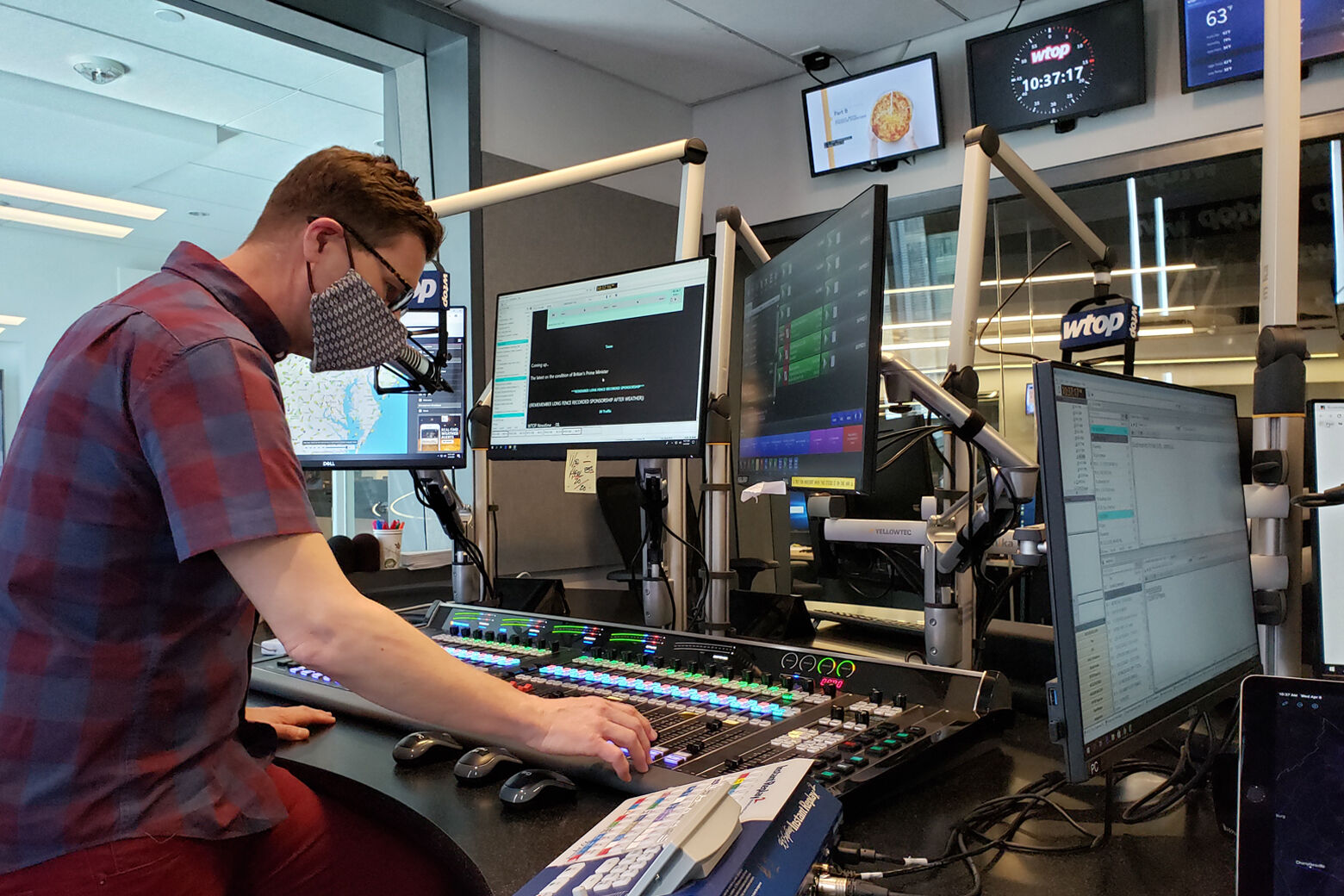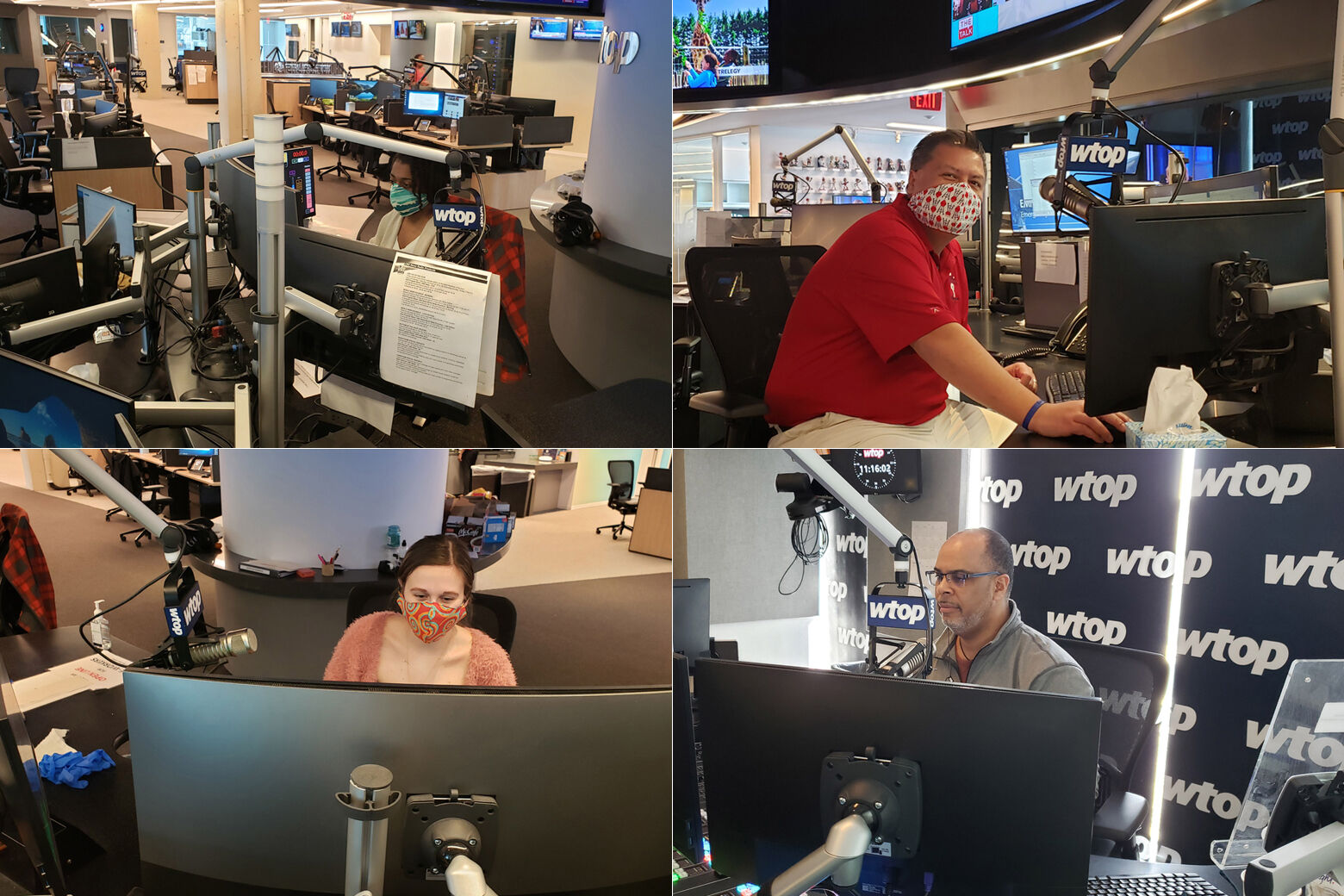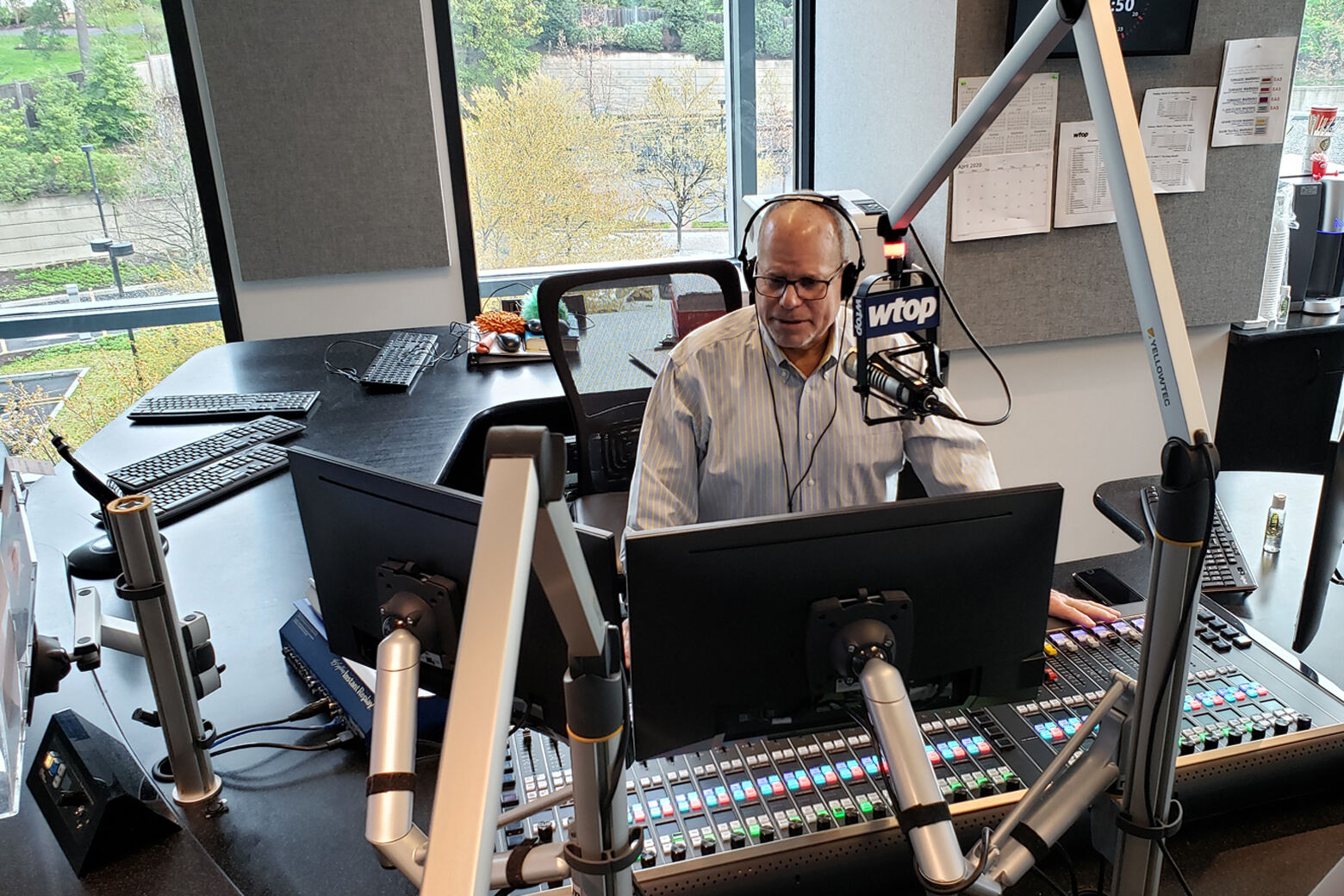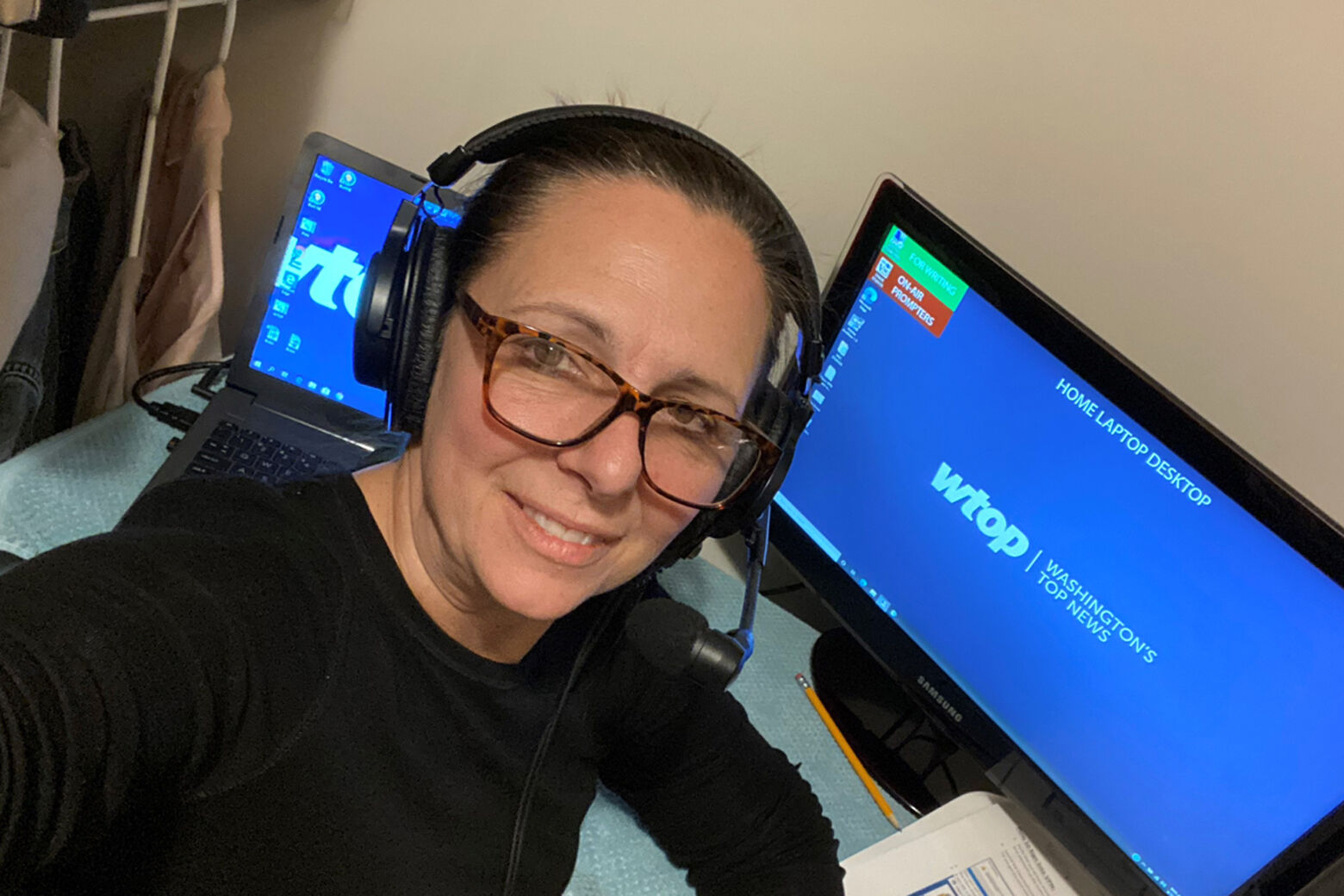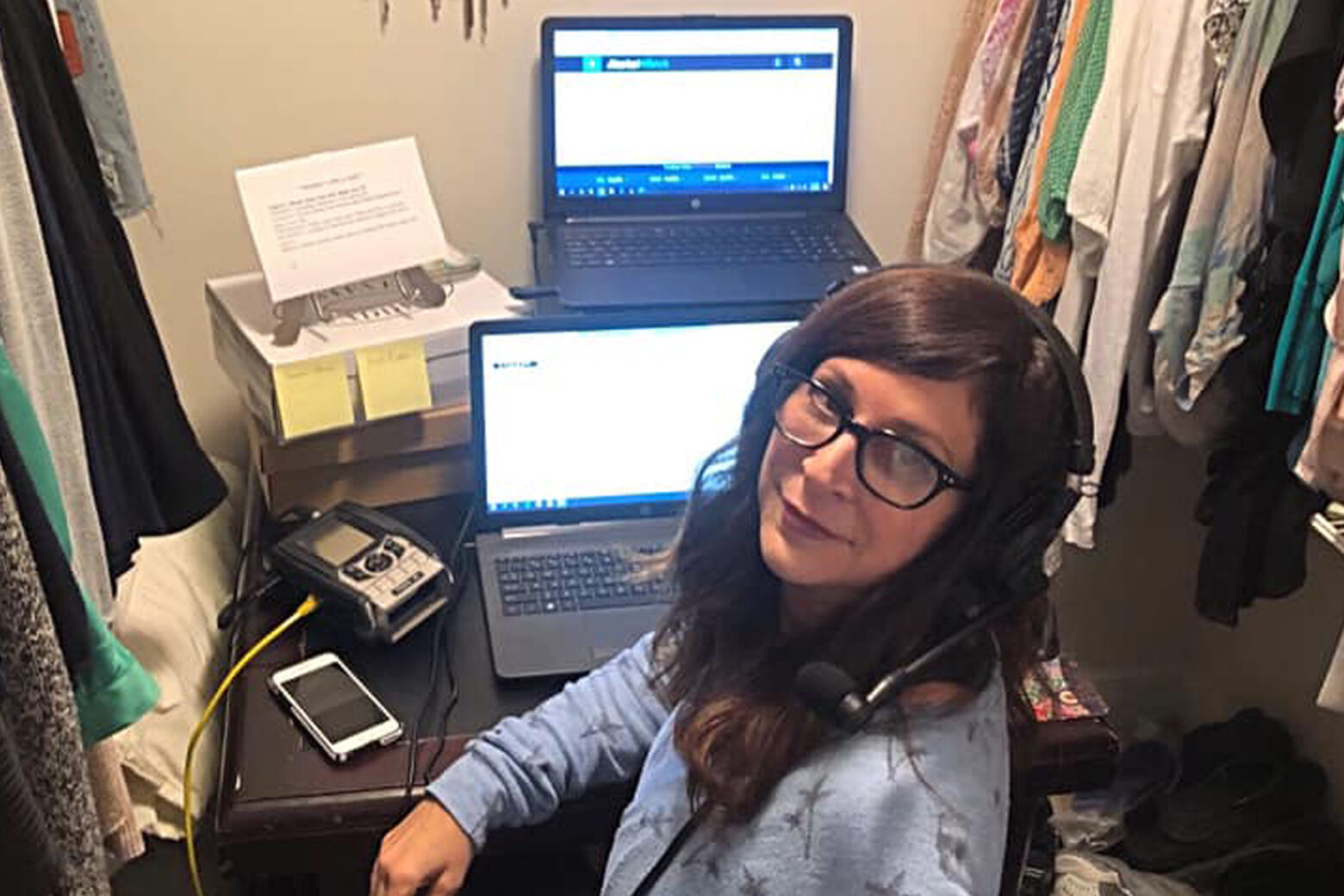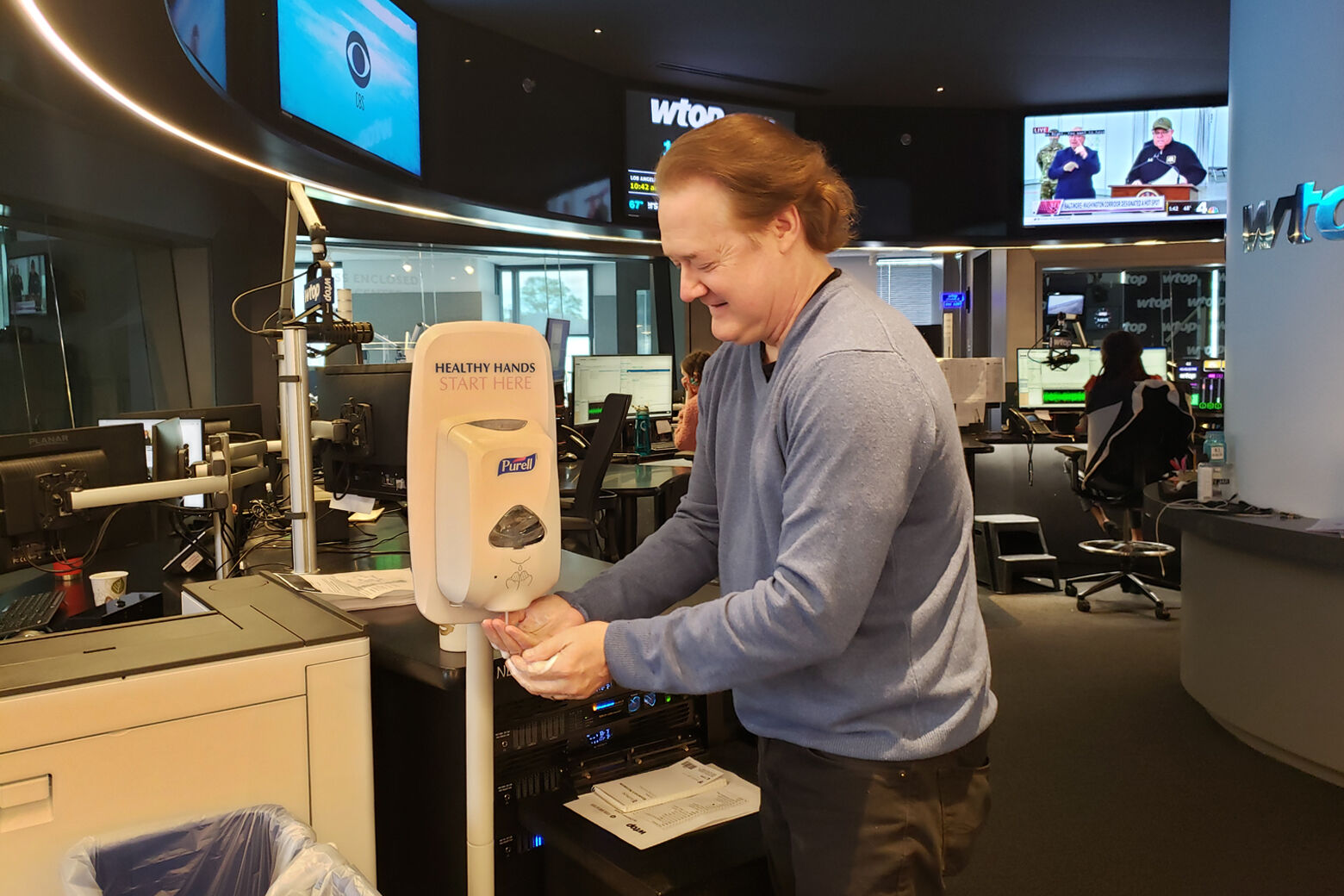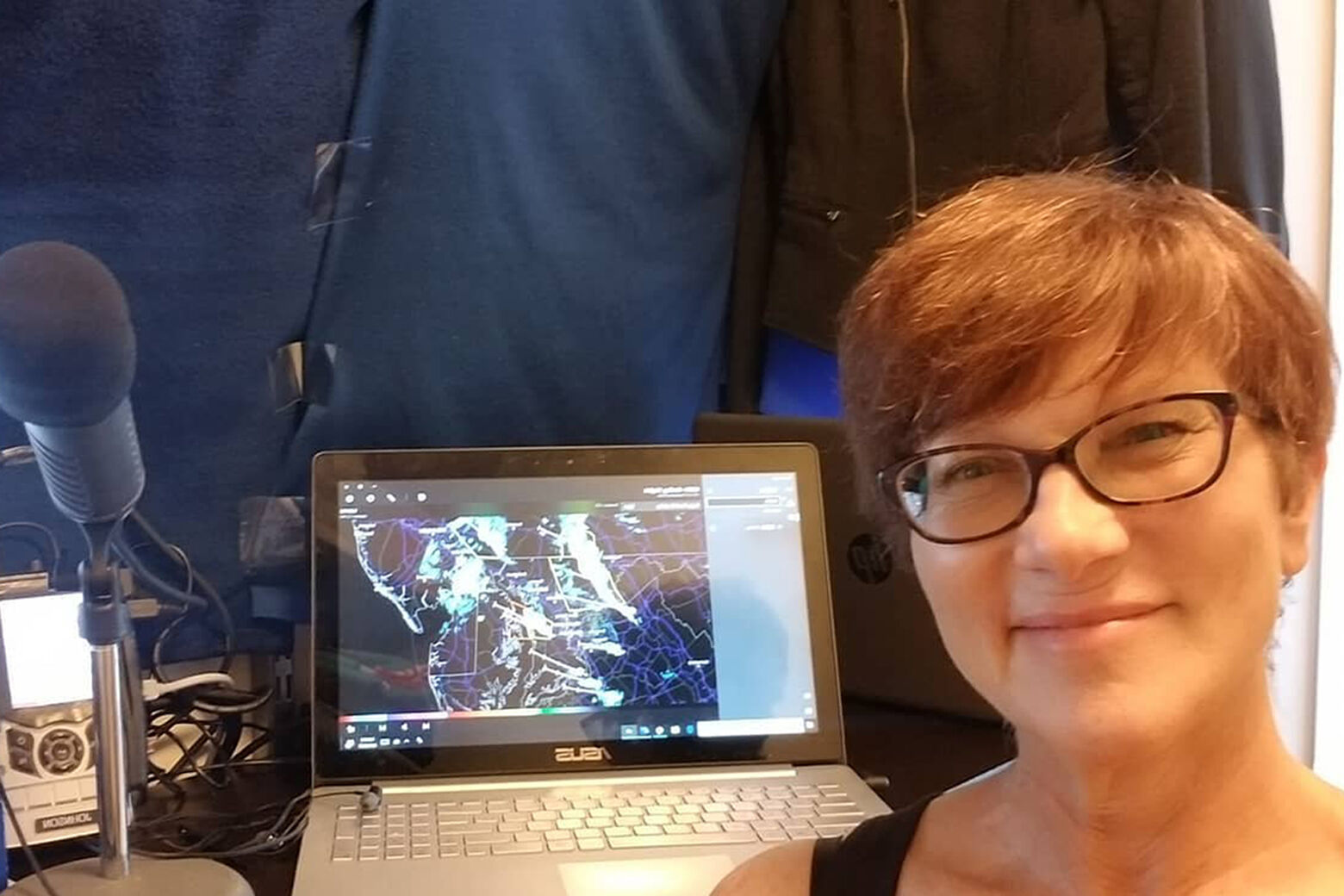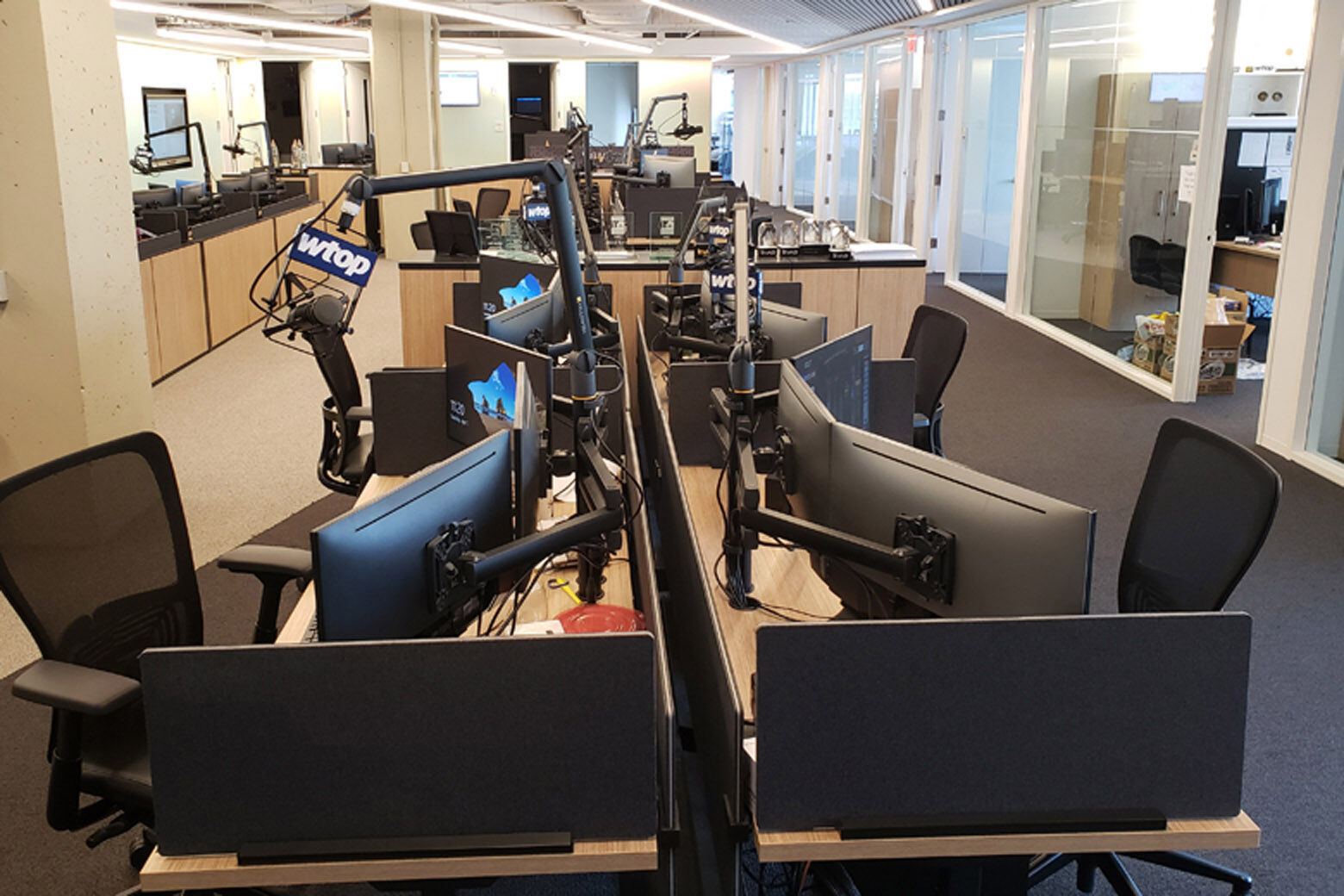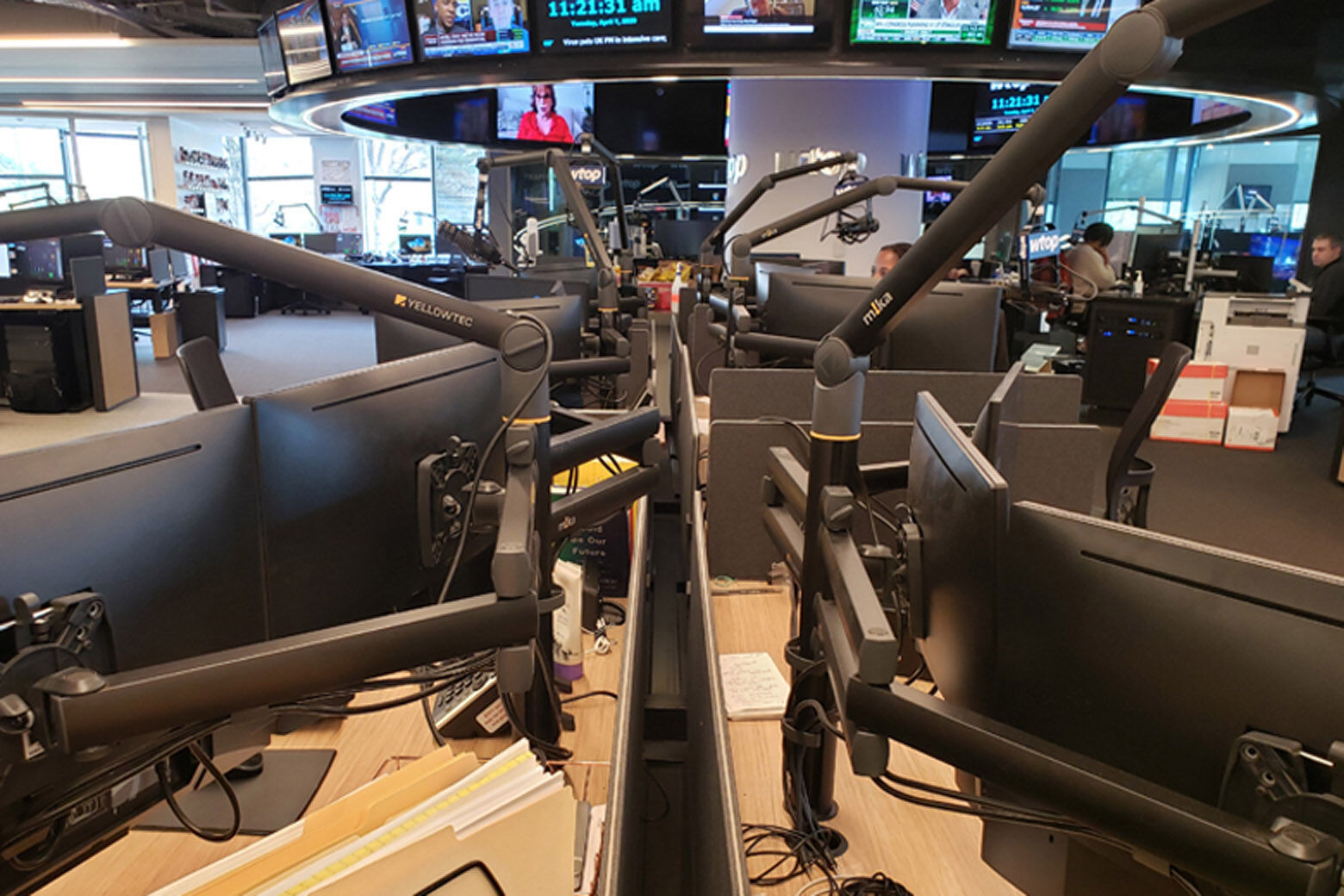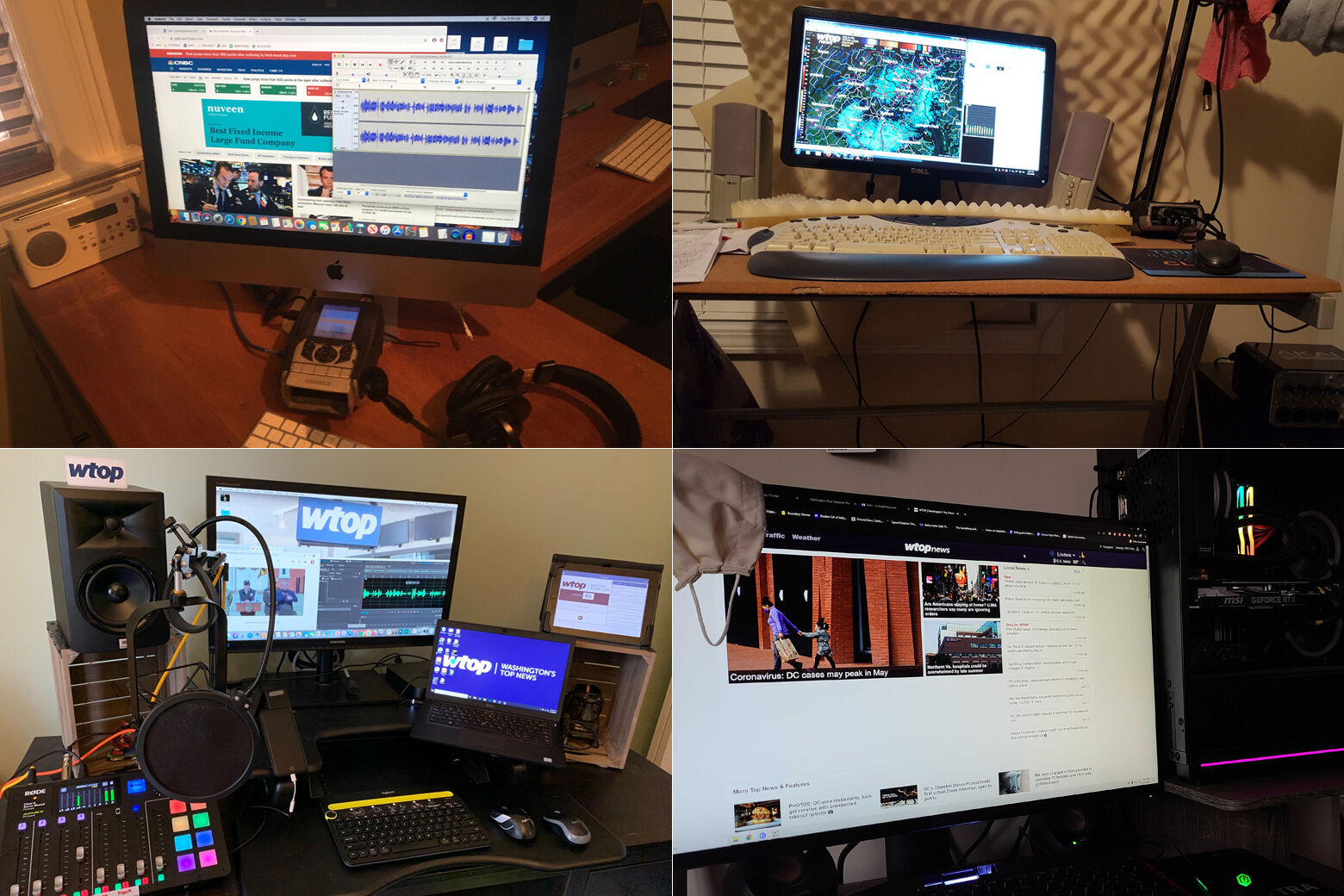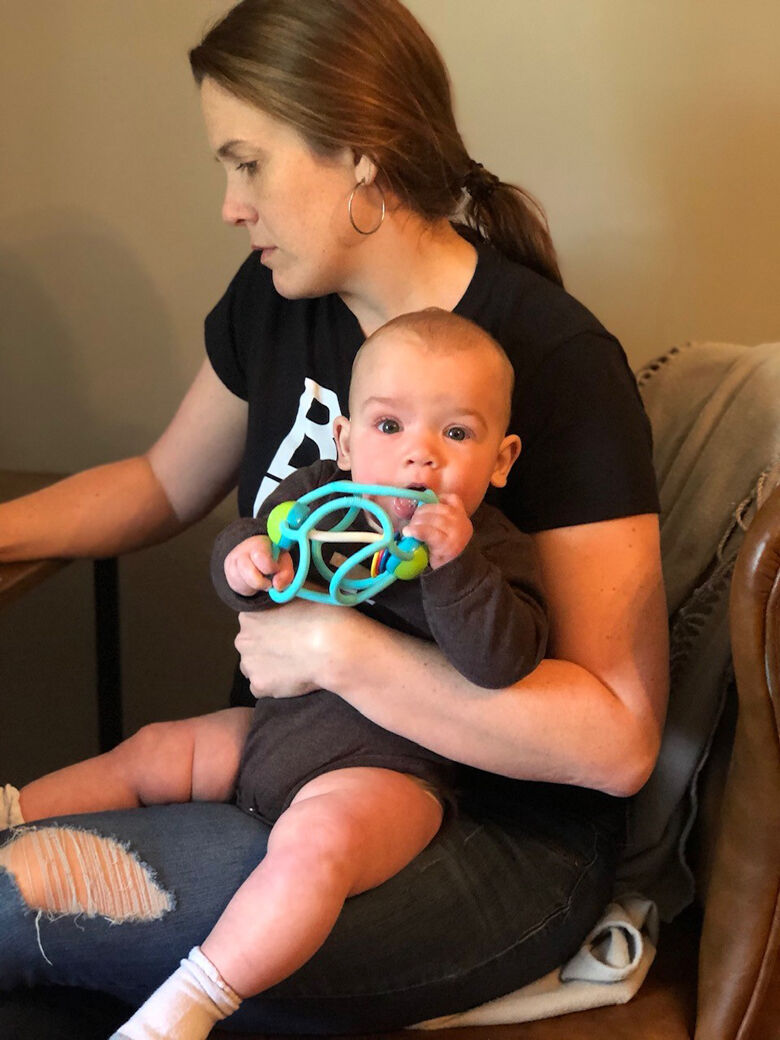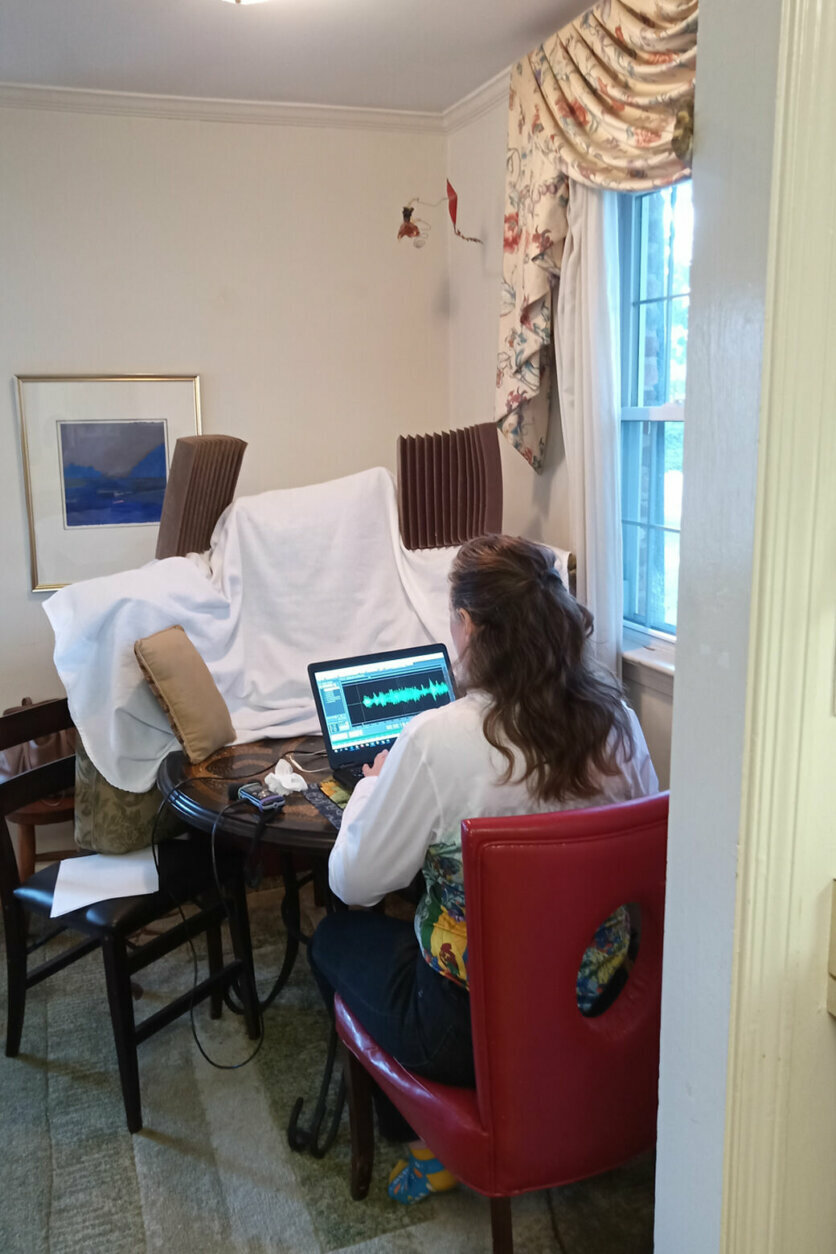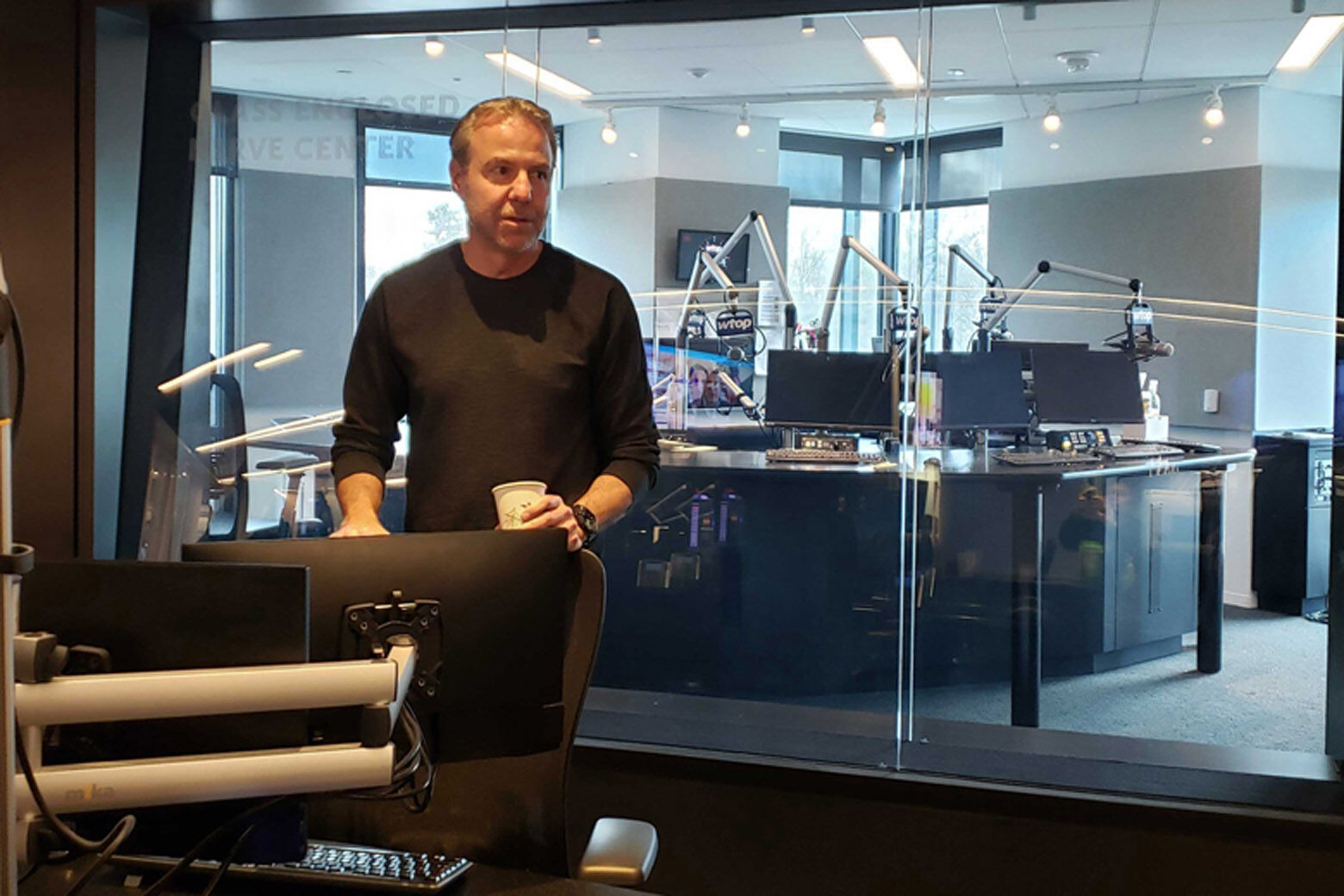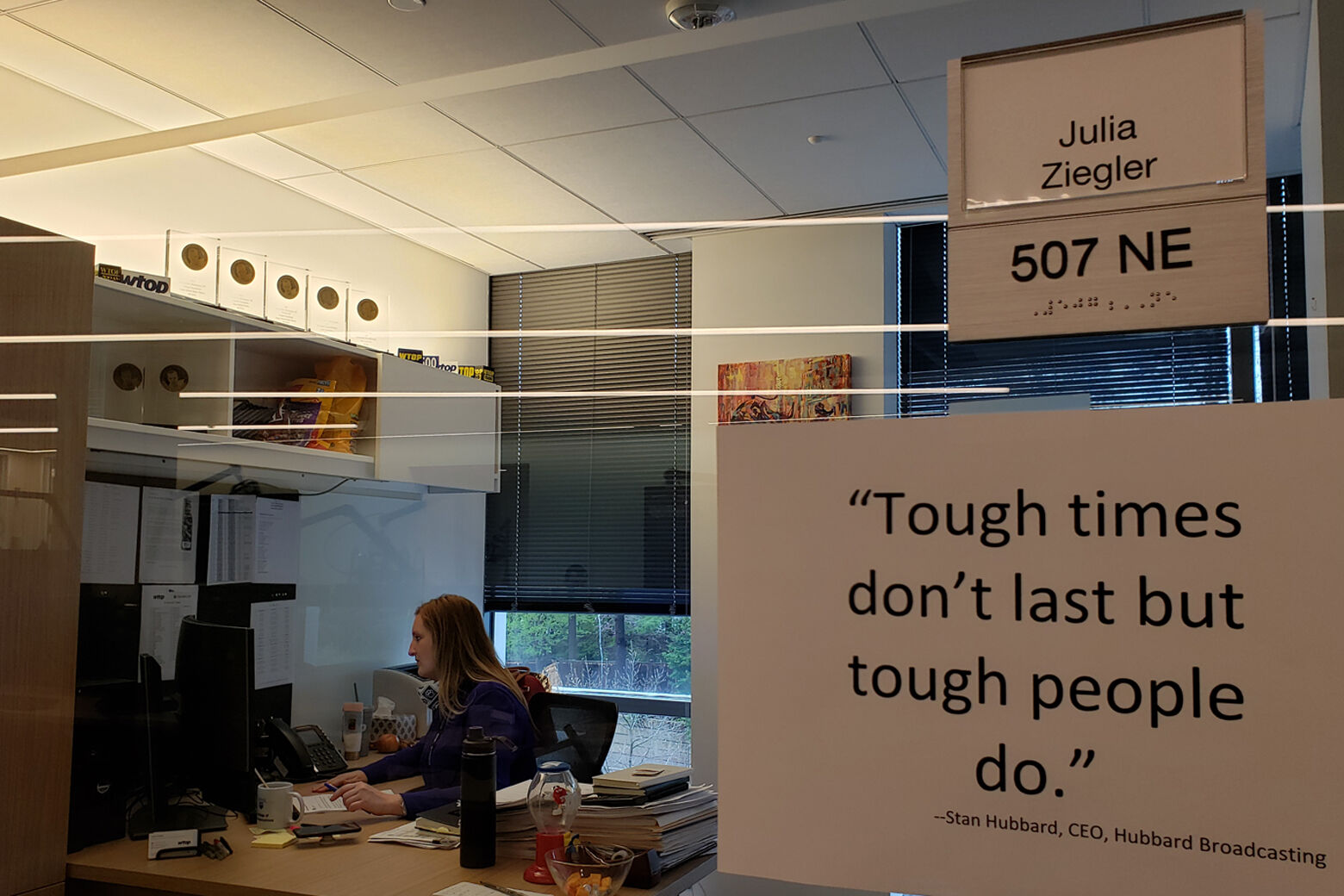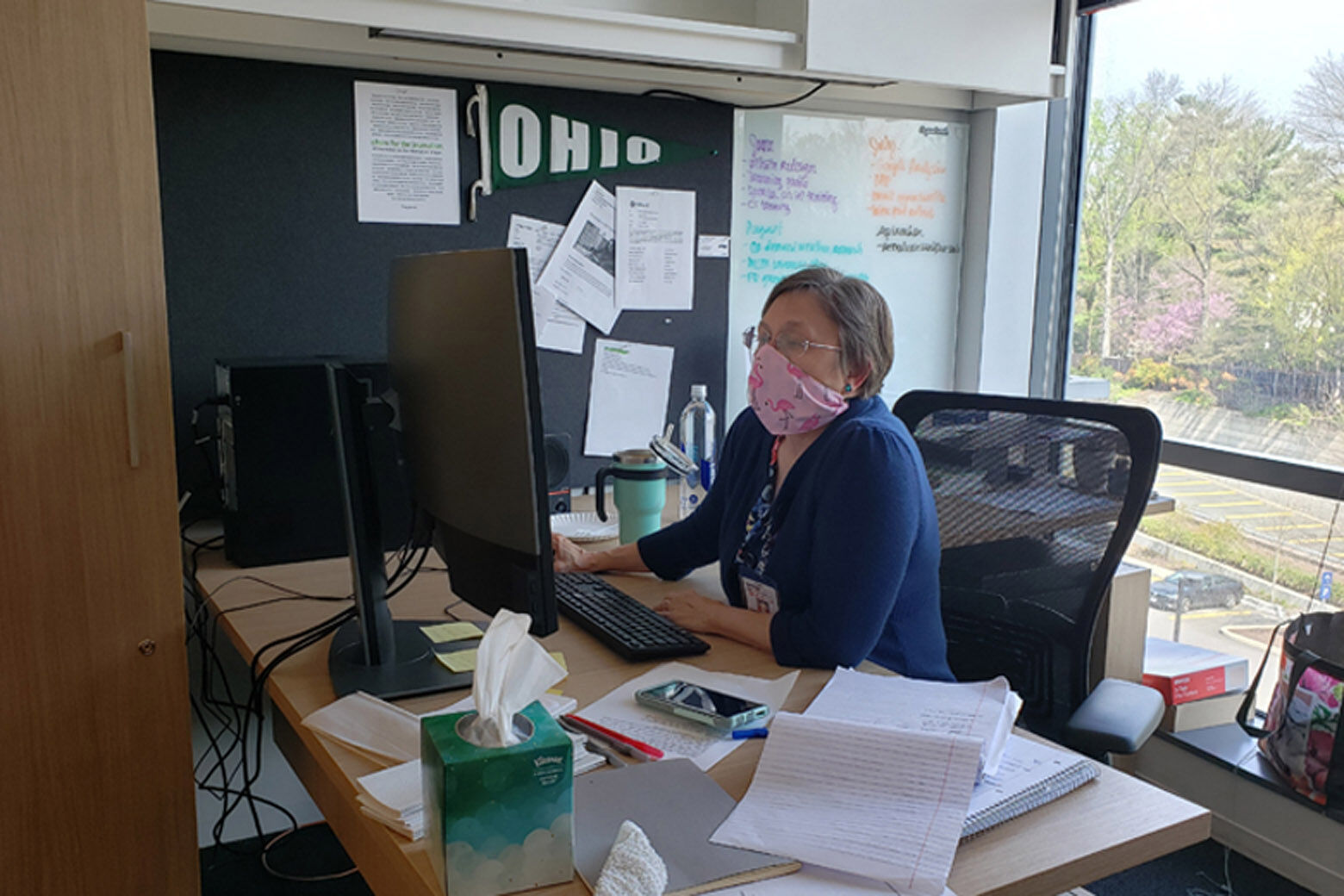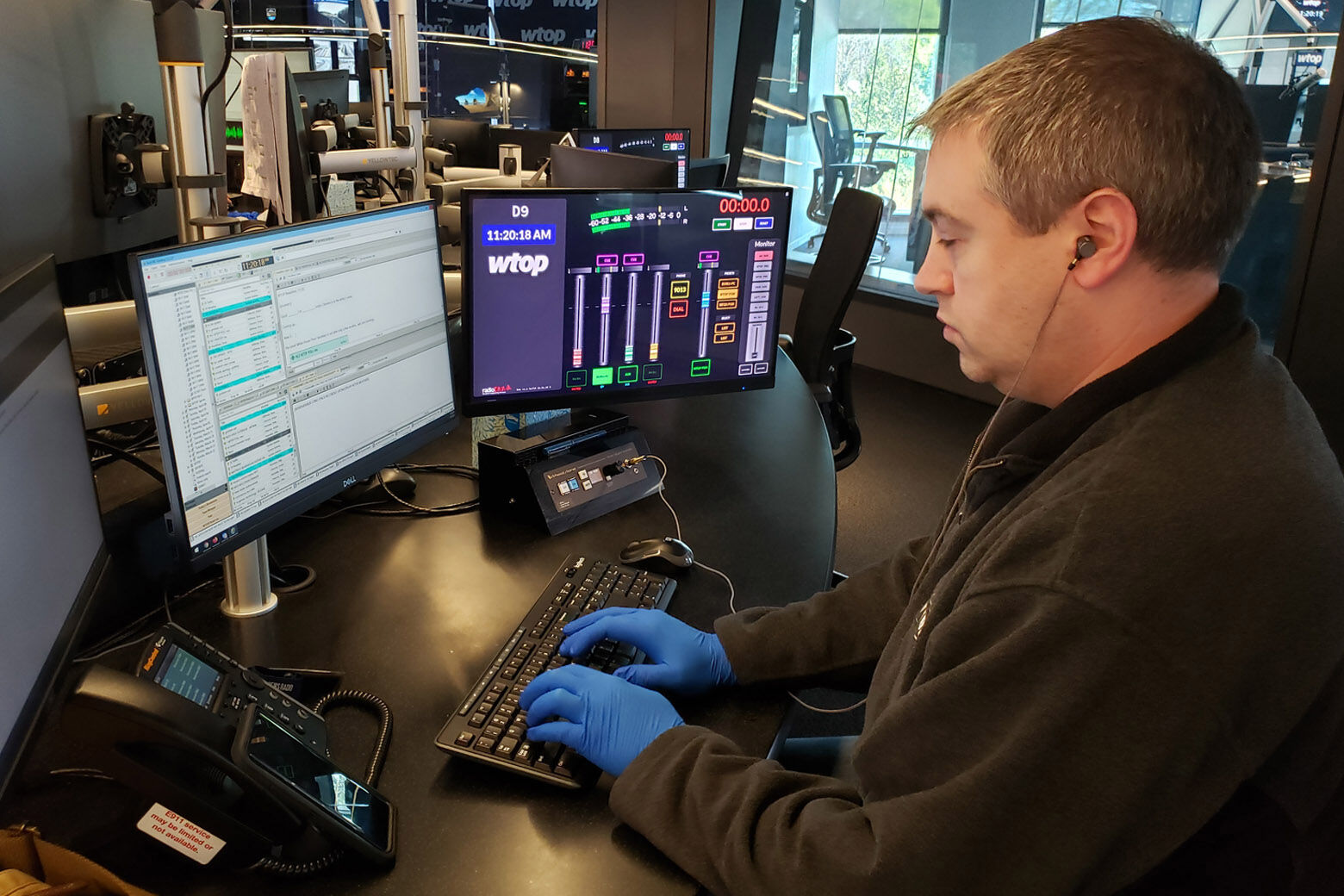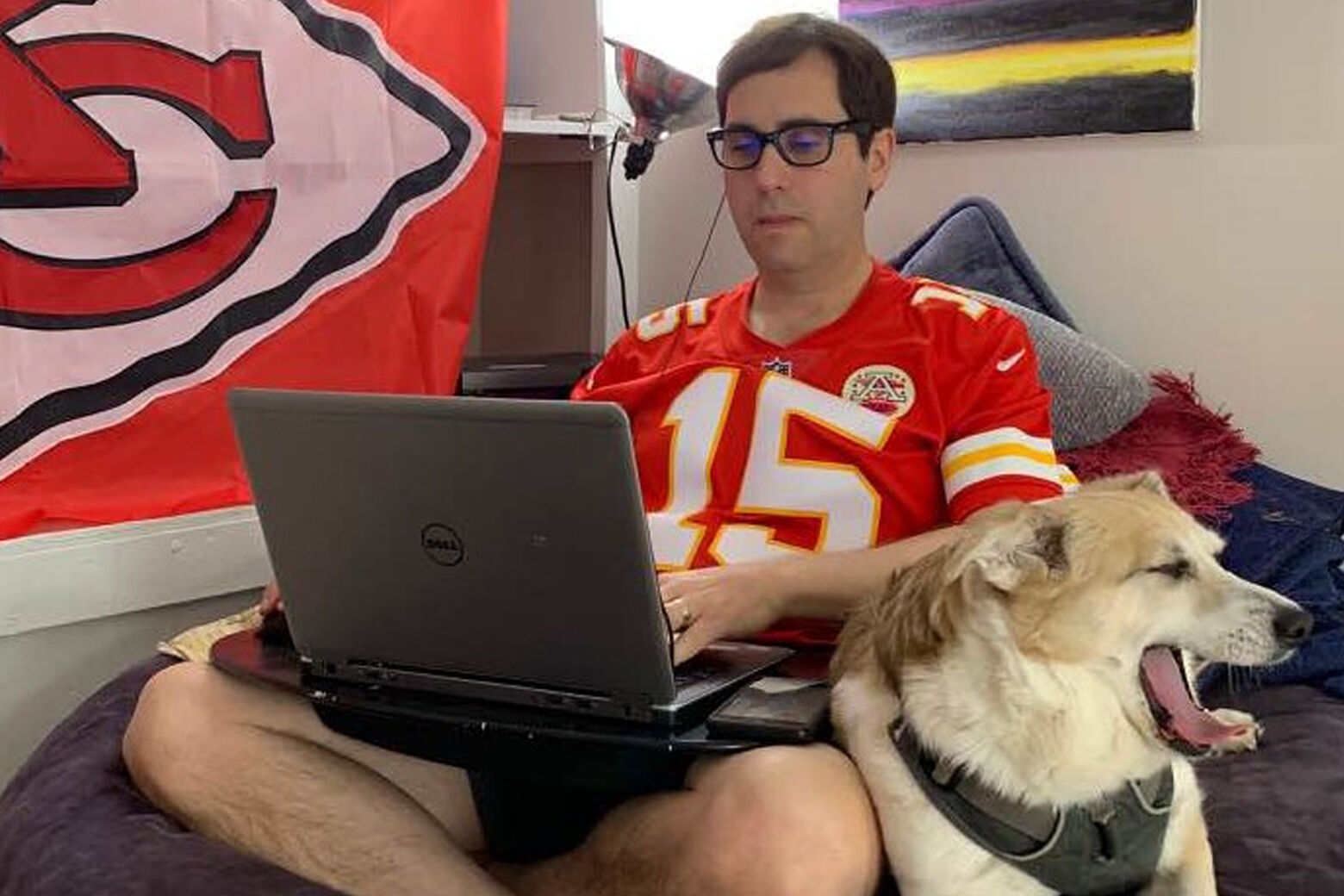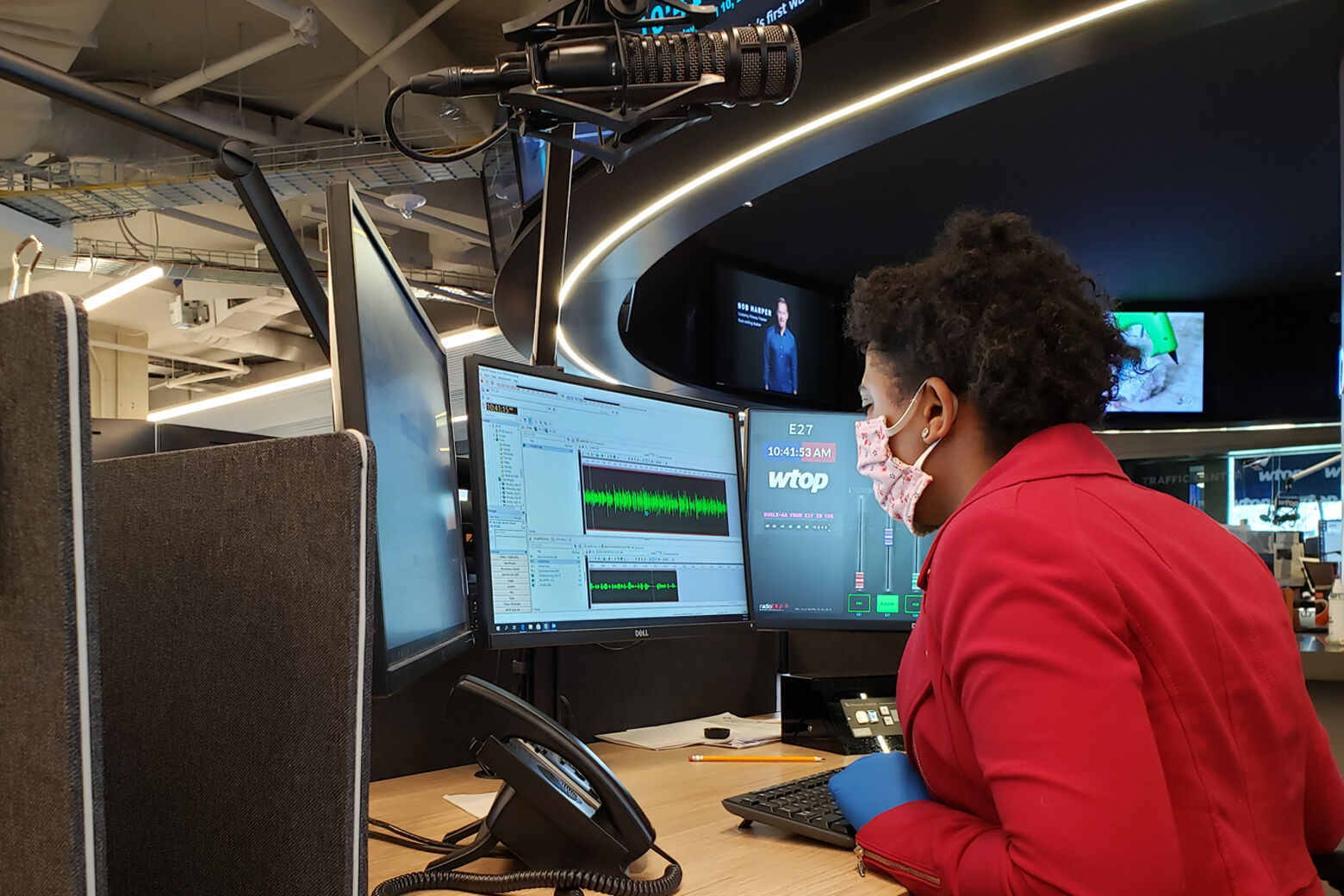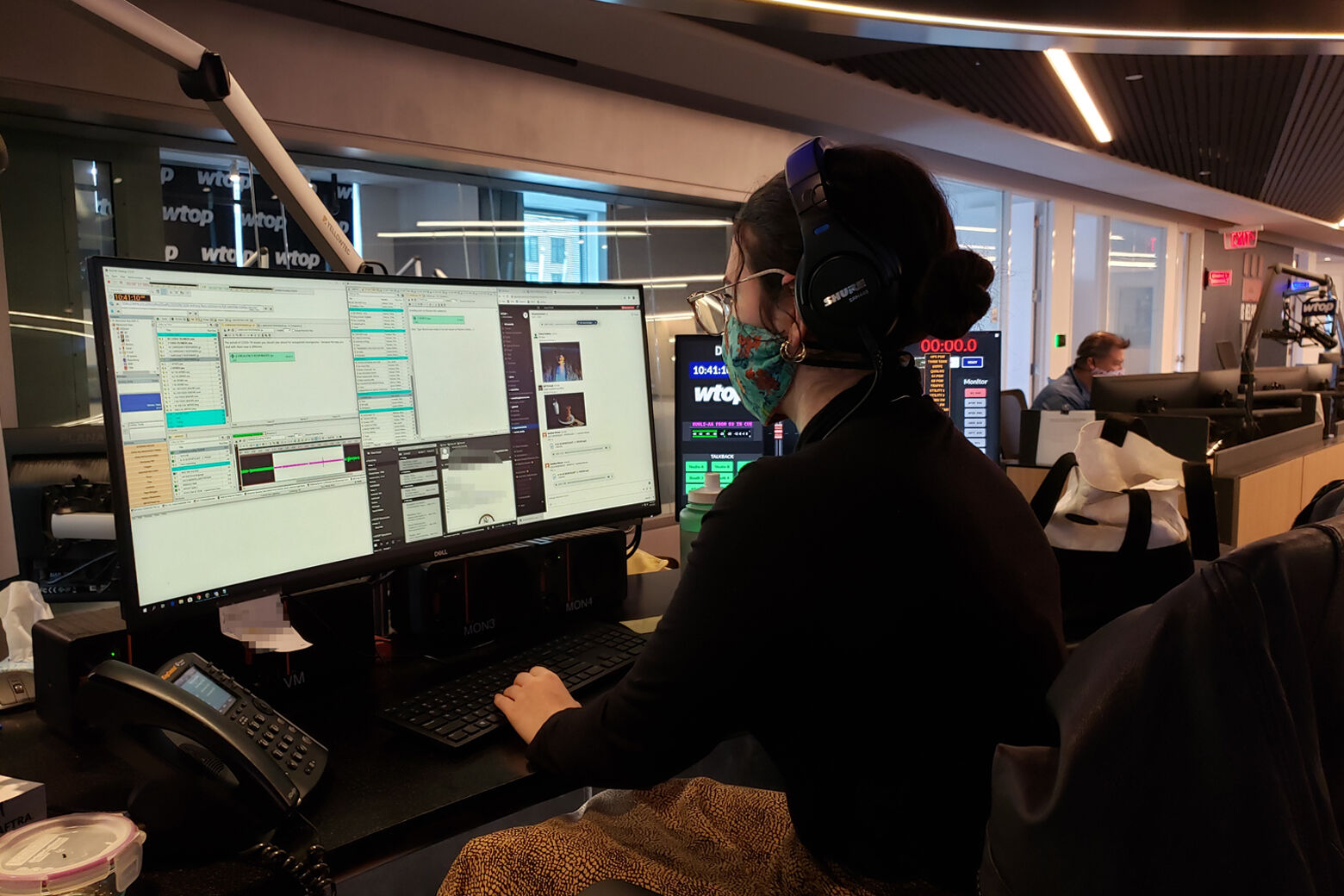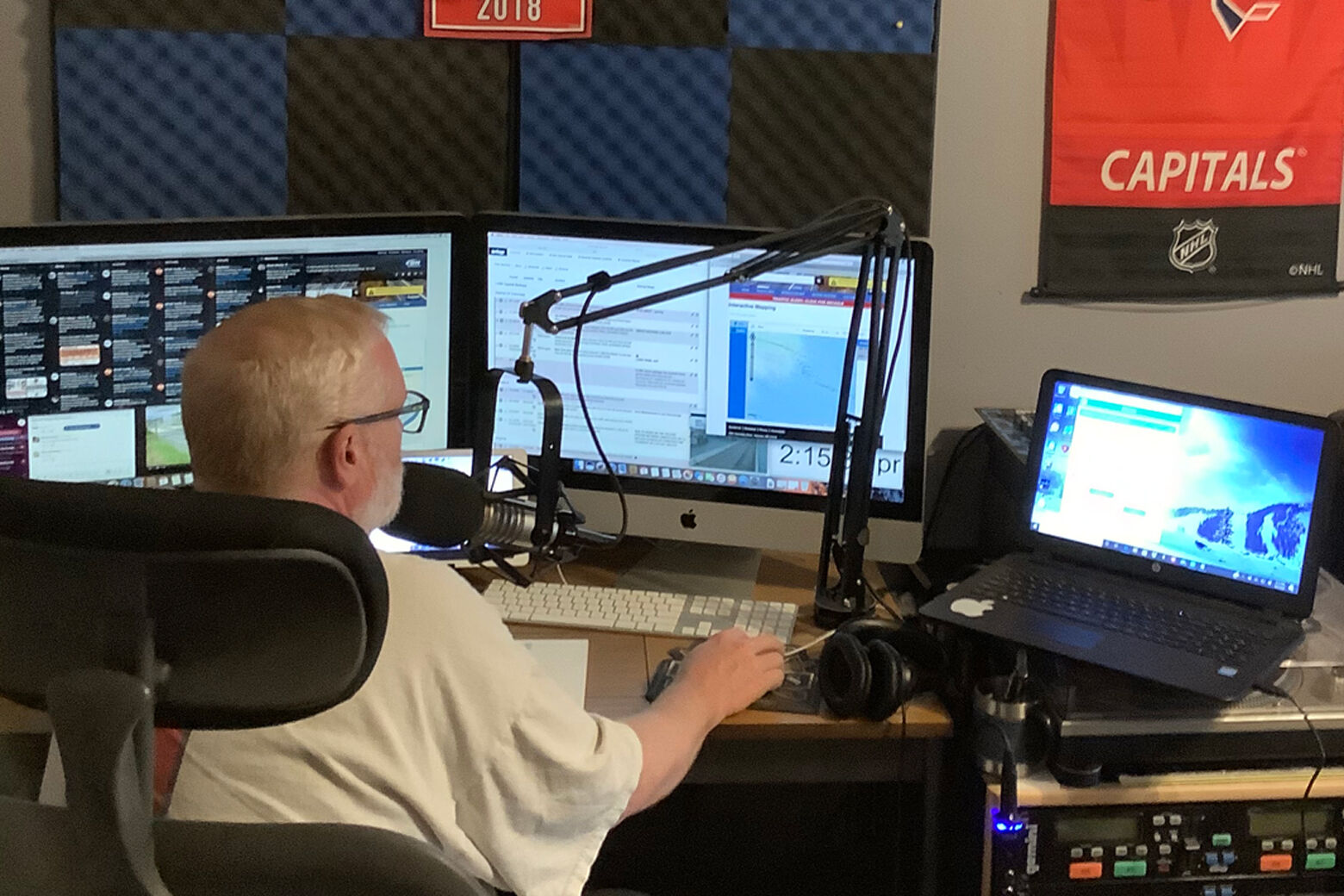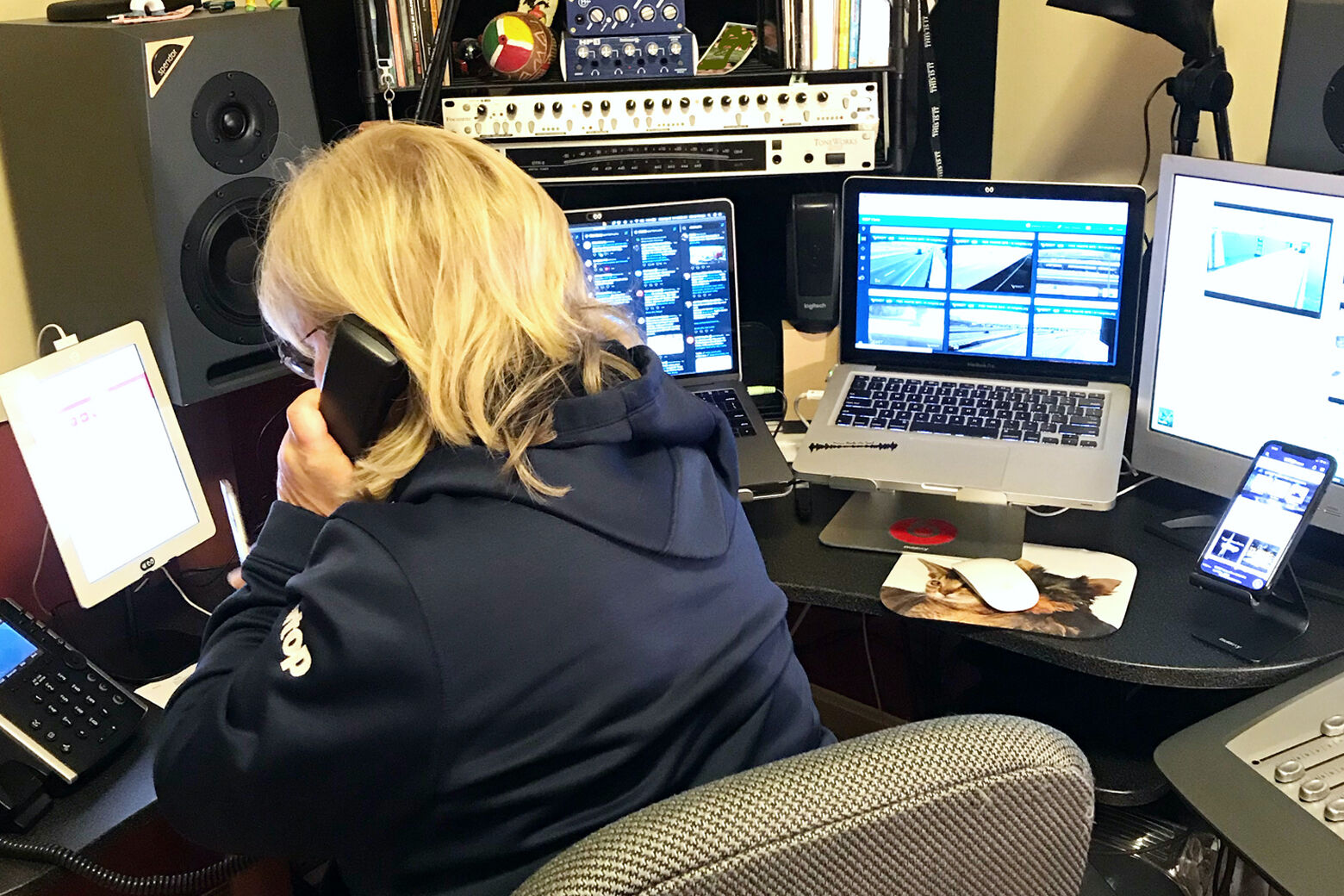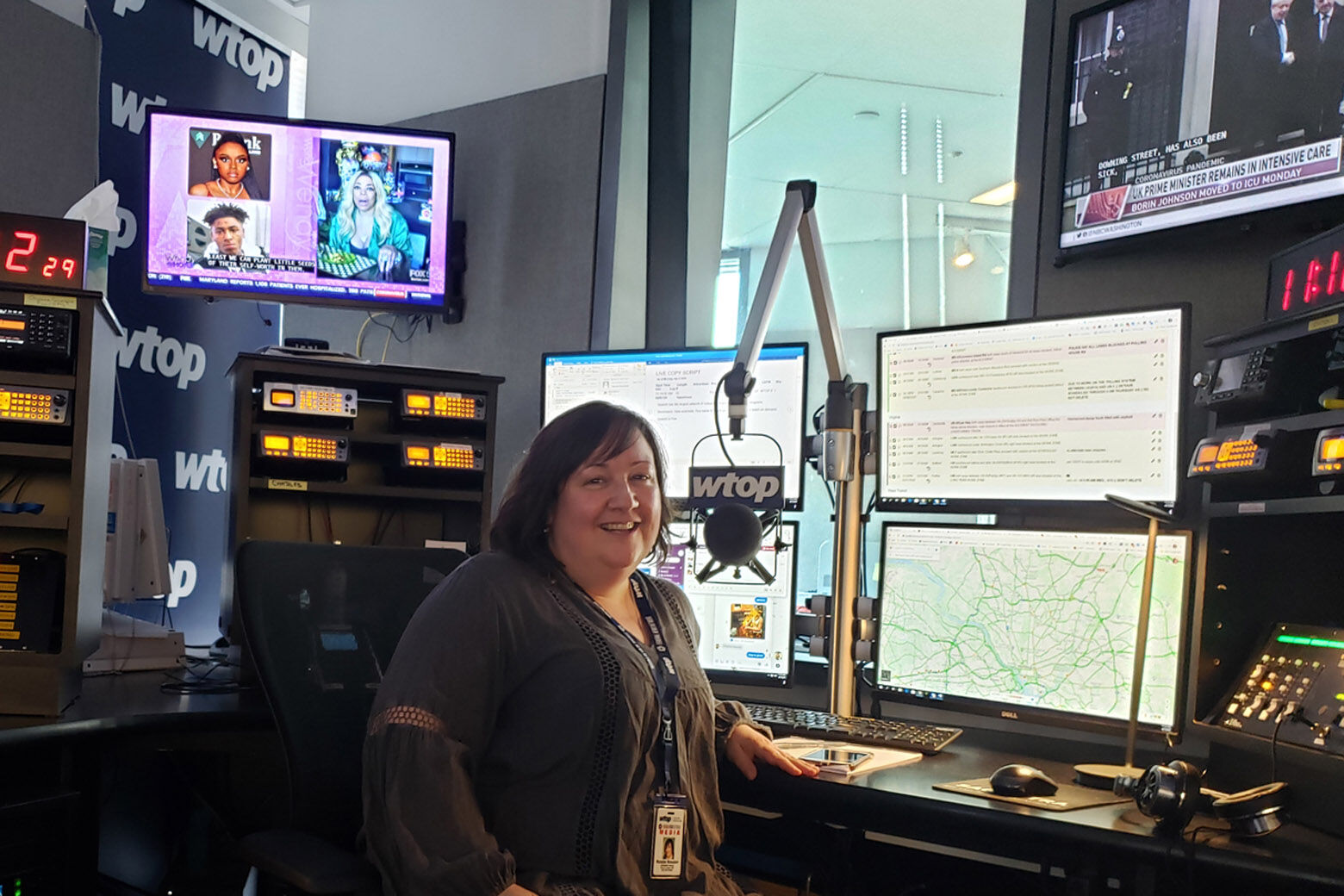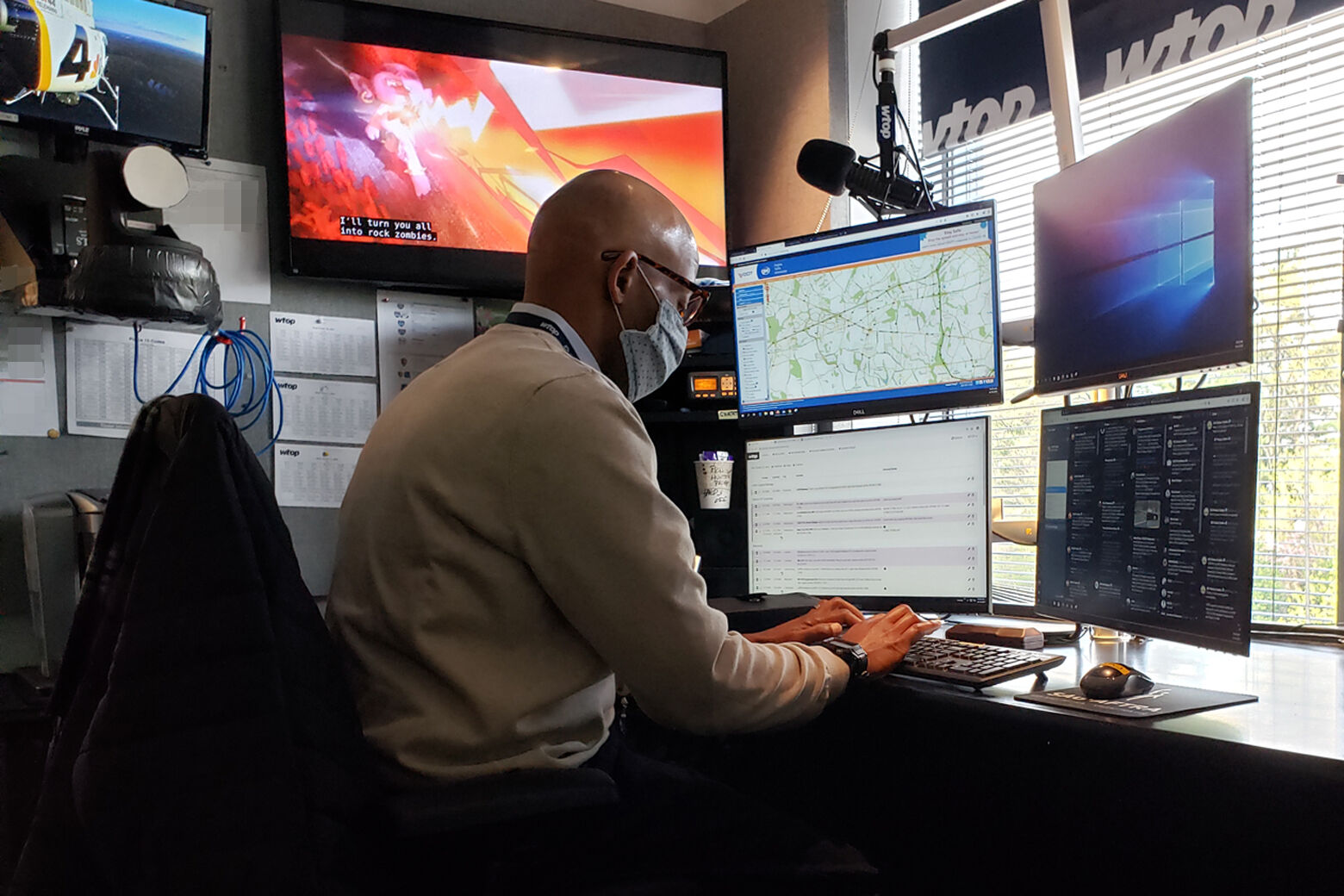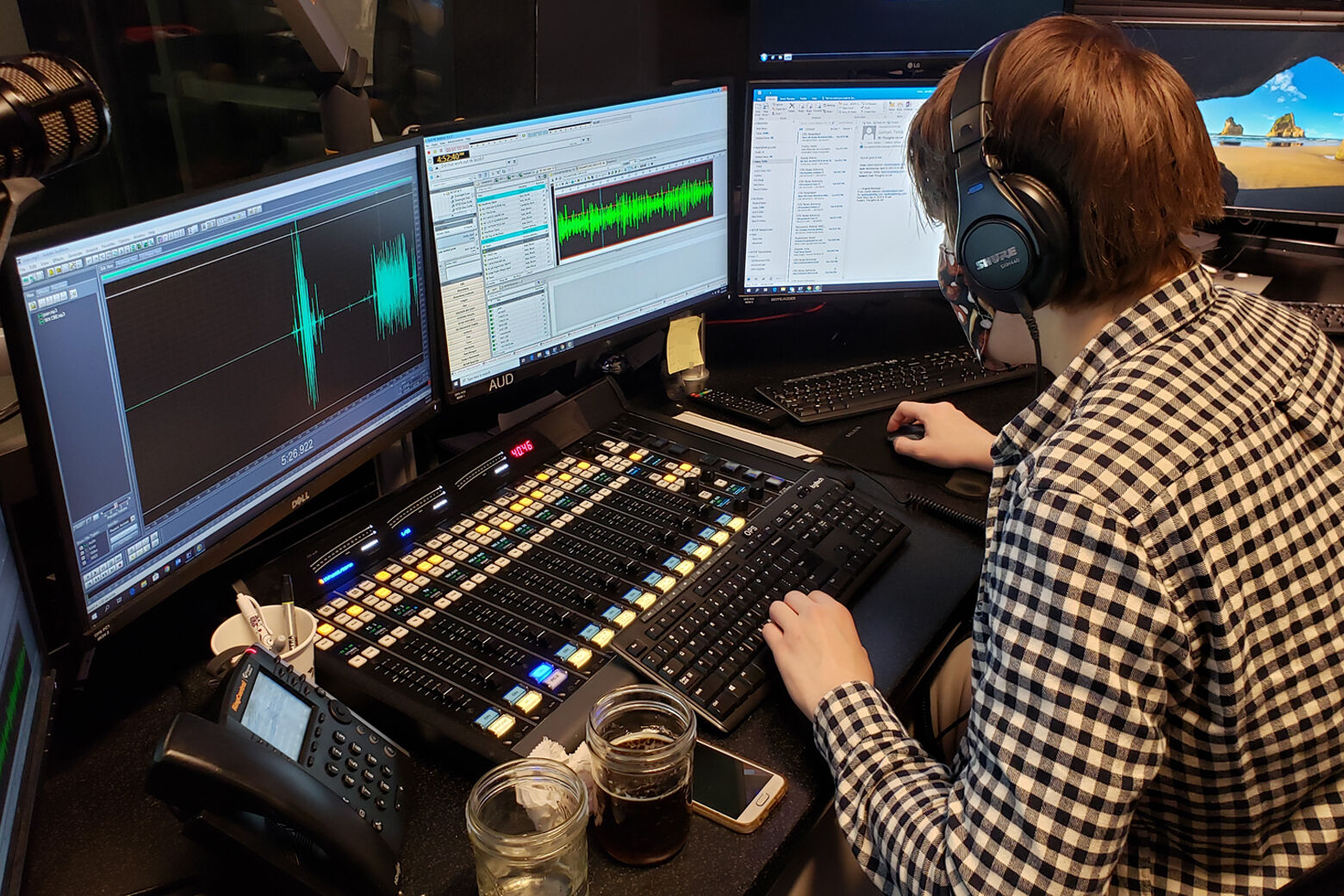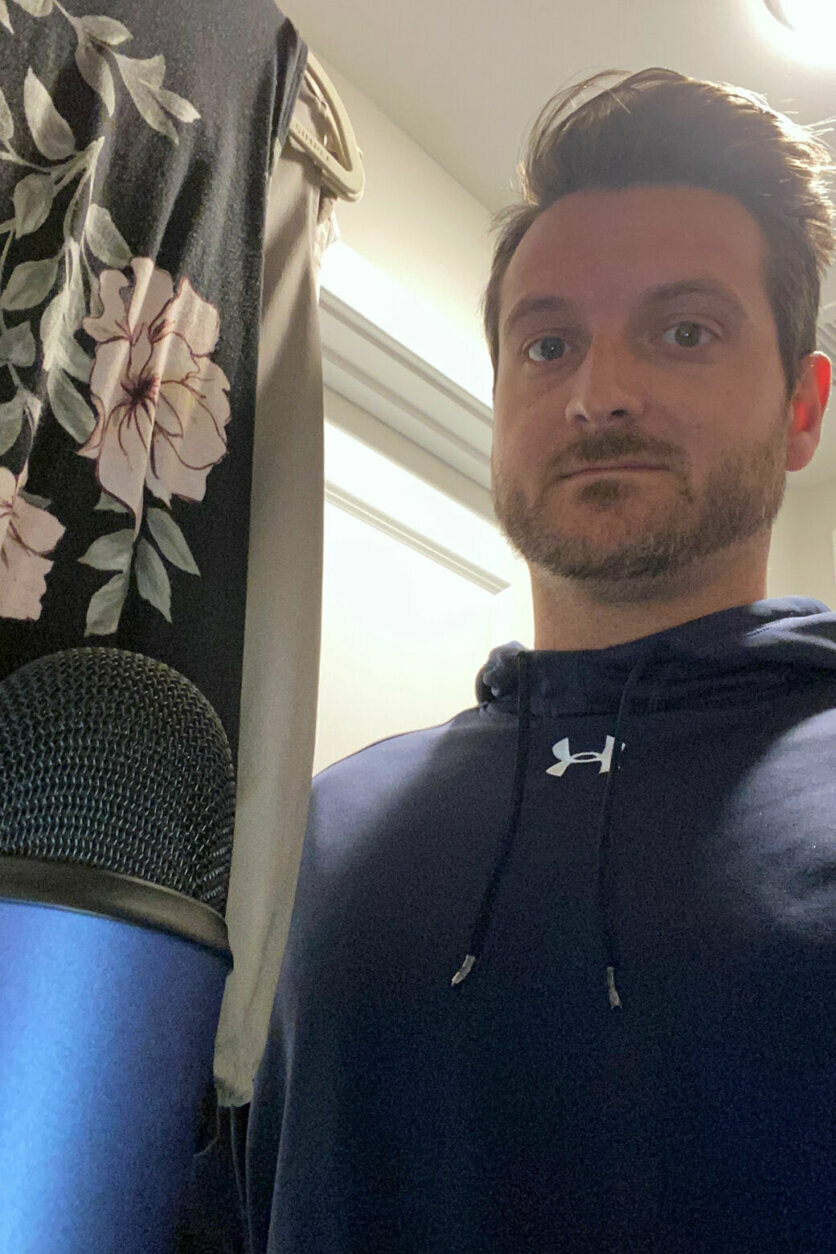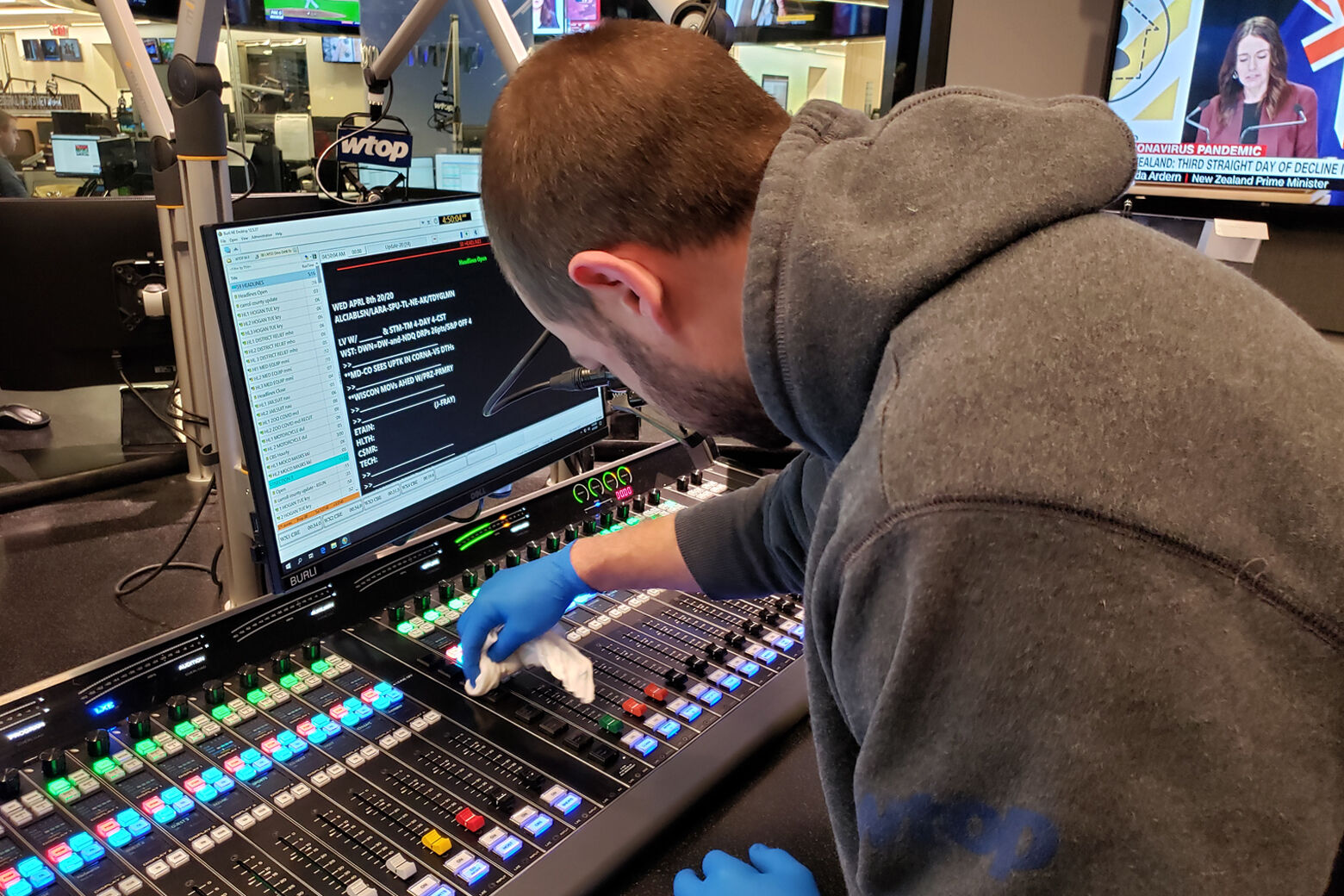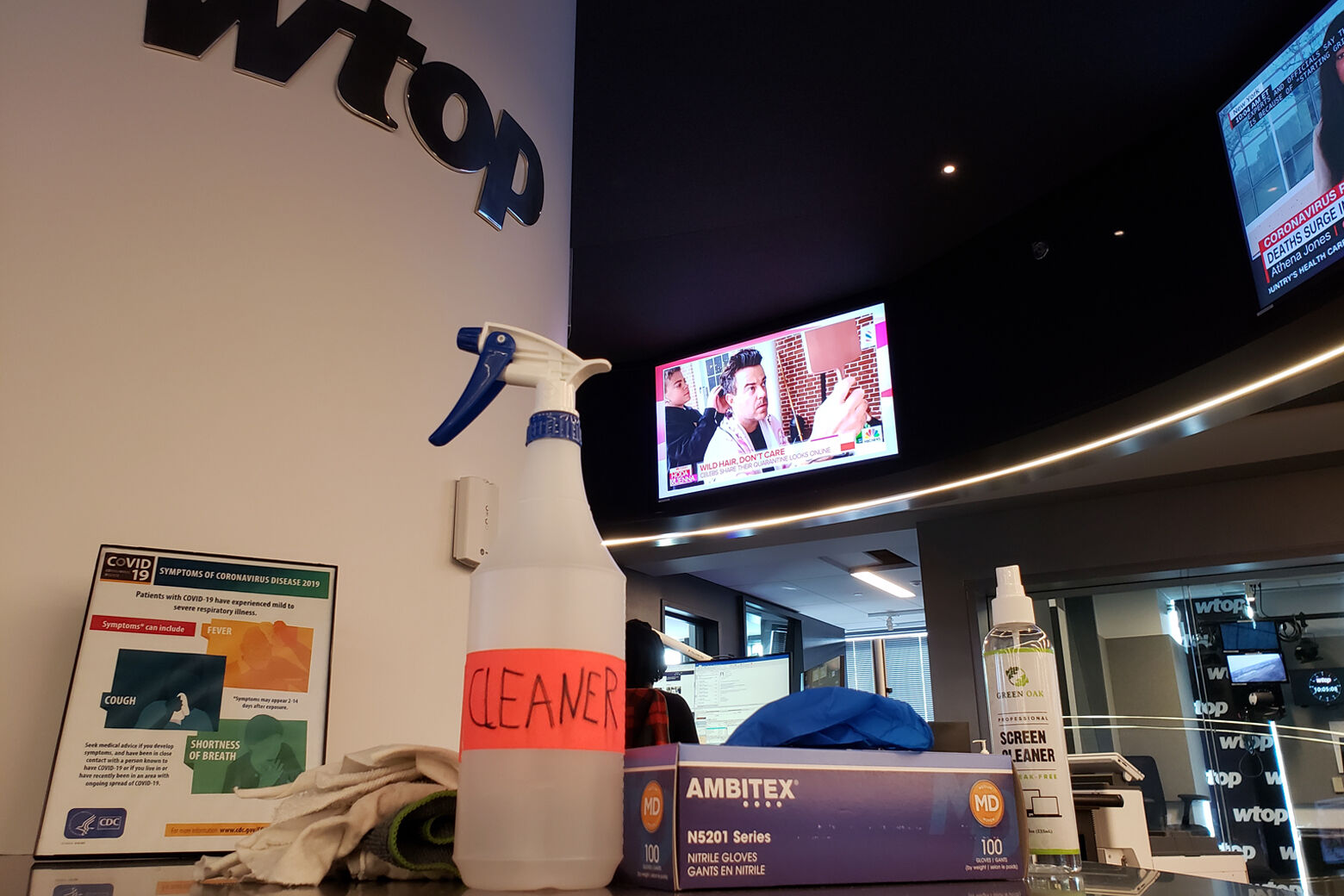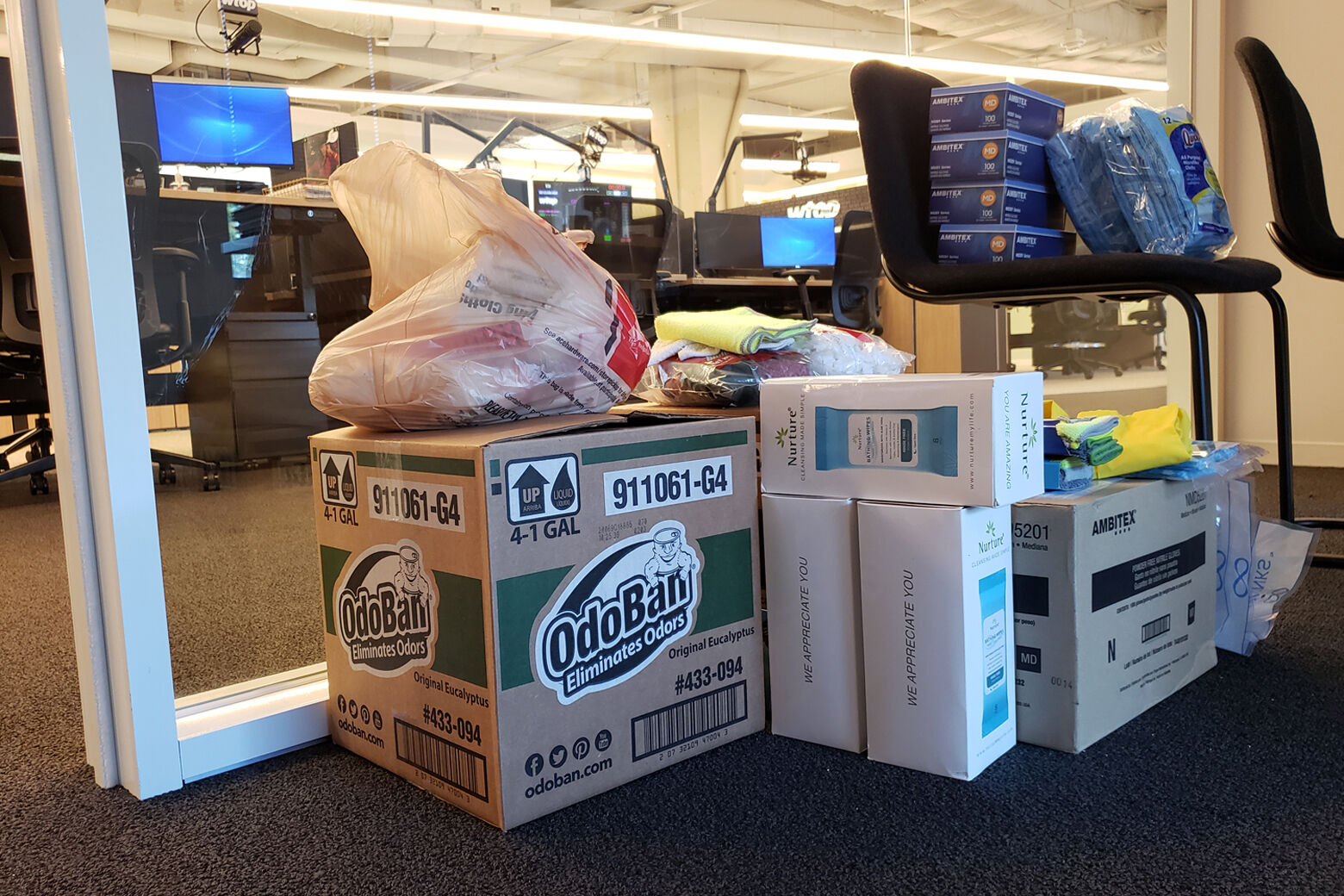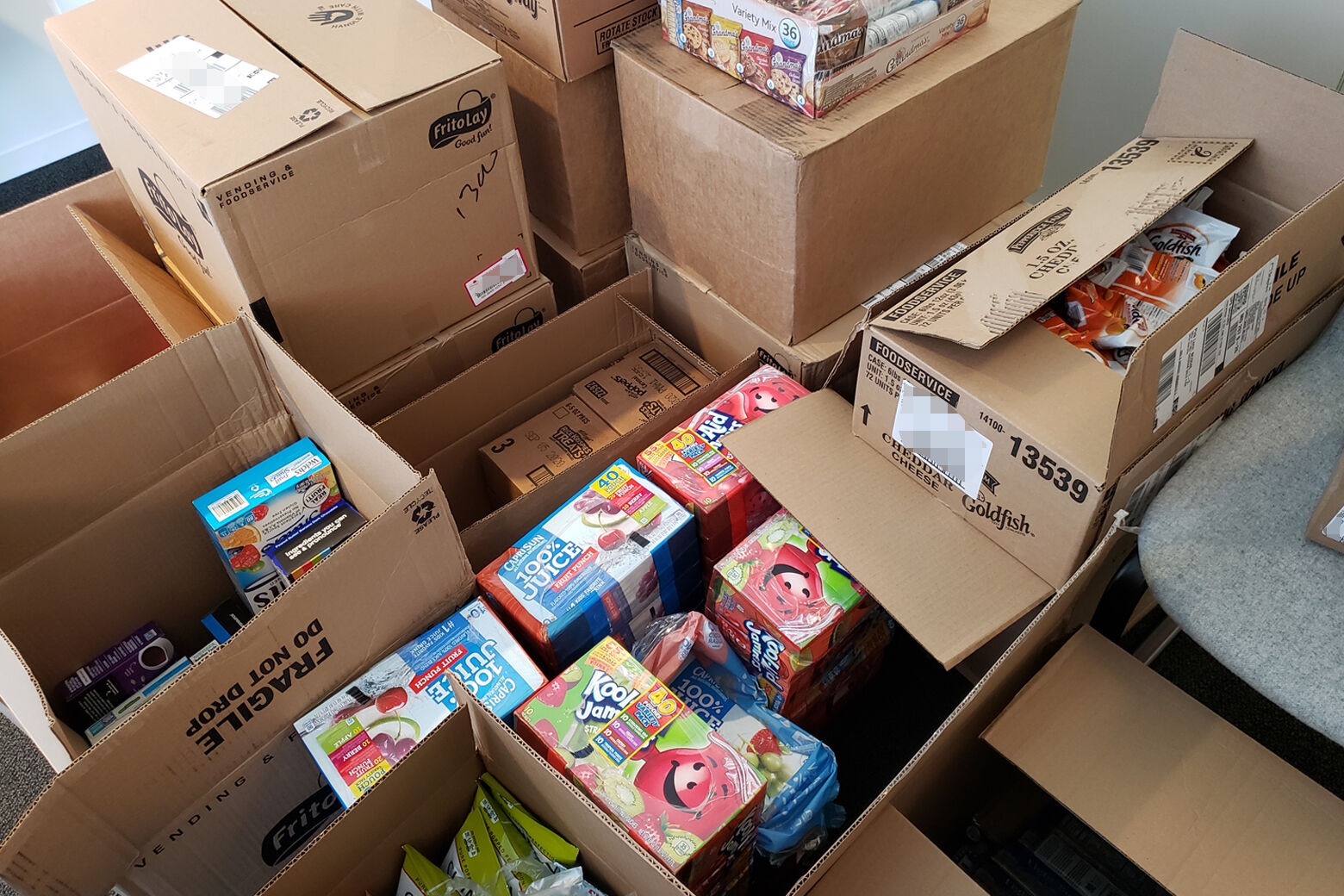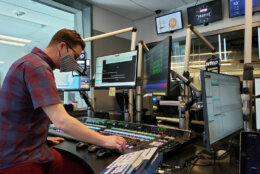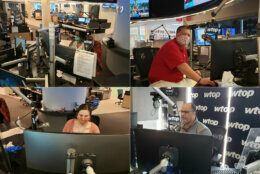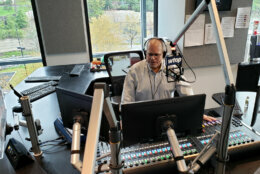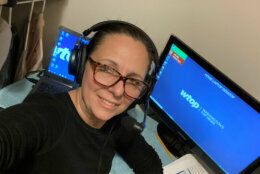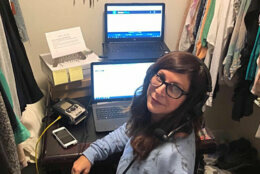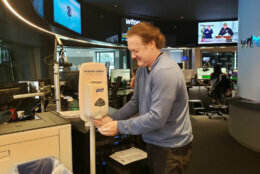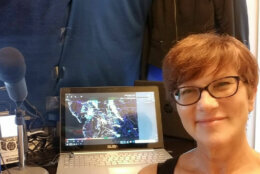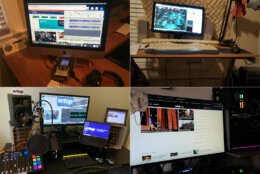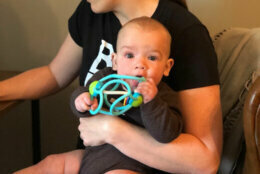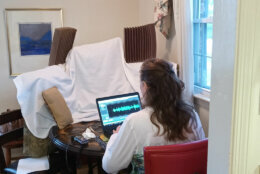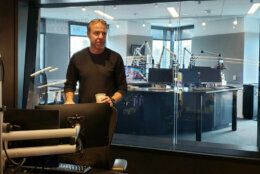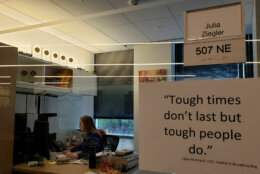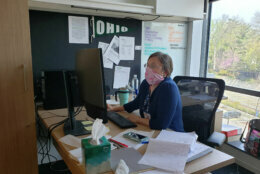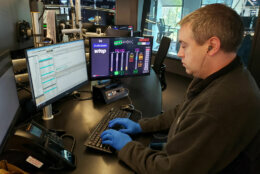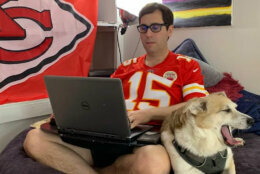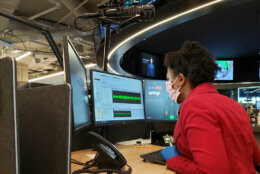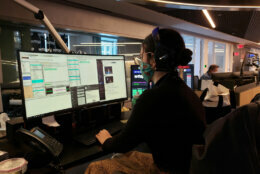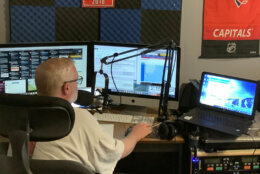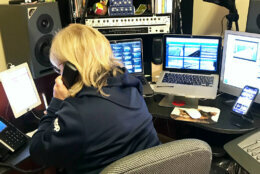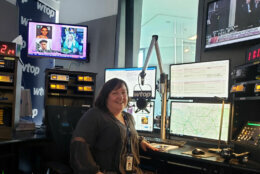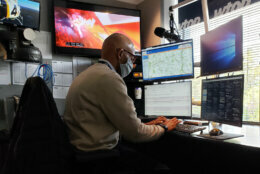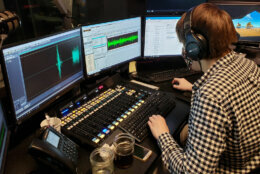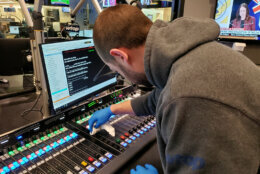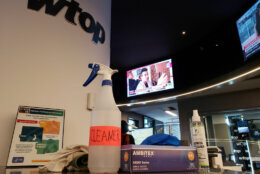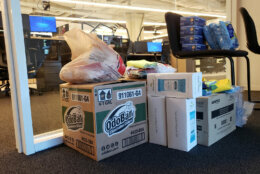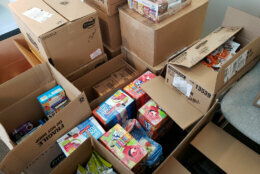I’m Will Vitka, digital editor for WTOP.com. I’ve been at home, working while in self-quarantine for longer than most. It’s been more than 40 days. And here’s what it’s been like.
We need caffeine

As a reporter, I crave caffeine. My wife Reem and I are in constant and dire need of it. When we run out, that’s when The Fear settles in.
Now, The Fear is different than the exhaustion I’ve mentioned.
The Fear is kind of the next step. An escalation. Because on top of exhaustion, we have to consider leaving the apartment to acquire caffeine — which, as far as Reem and I can tell, is critical to doing our jobs.
No, we haven’t considered living without it. The world is enough of a nightmare hellscape as it is. Why bother trying to survive without caffeine?

A quick example of Reem and me without caffeine, plus more than 37 days staying home: She made pancakes in a pot the other morning.
We have perfectly good pans. She decided to use a pot. When I pointed this out, she just giggled and cackled in a “Hahaha, I swear I’m not a serial killer” way.
One of the people I think about a lot, and talk to over Discord as often as is possible alongside my brother and our gaming buddies — in an attempt to maintain our sanity, though results are dubious at best — is my friend Chris, who currently lives in habilitation due to cerebral palsy.
His roommate recently tested positive for COVID-19. The only thing the habilitation center could do was put up a plastic barrier.
As bad as things feel for many of us, just keep in mind that it’s a lot worse for others.
And I’m not saying things will get worse but… things will get worse.
Both for those in isolation and those not isolating. And I think that’s especially true when I see so many ignoring distancing and mask (face covering) guidelines.
Being a reporter these days already feels like Kevin McCarthy at the end of the original “Invasion of the Body Snatchers”:
But, regardless, we need caffeine.
That means running to the store, grabbing the goods and getting out of Dodge as fast as possible to keep working.
Ever since the Centers for Disease Control and Prevention switched tracks and said people actually should be wearing some kind of cloth covering over their face, I don’t leave the apartment without a mask (one my mother-in-law made).
And, man, when I get back, I scrub the hell out of my hands.
It’s not merely an abundance of caution or paranoia. Coronavirus isn’t going away any time soon. So bundling up, even when it’s warm outside, is the only responsible thing to do.
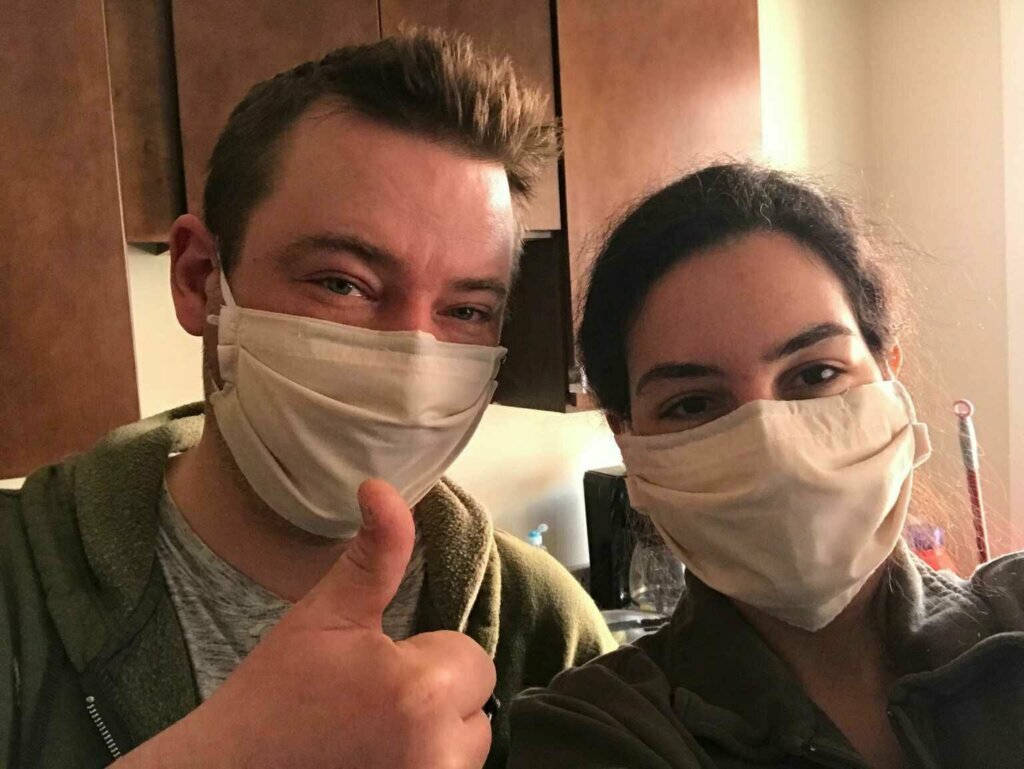
If you want to see disgustingly irresponsible and gross as hell, check out the letter sent around my apartment building below.

Emails were sent to residents, by management at the apartment building, asking them to “Refrain from flushing paper towels, wipes (even wipes designated as “flushable”) and other non-toilet paper items down the toilet.”
I don’t think I flushed paper towels down the toilet even as an idiot child.
Things are getting real, real weird out here folks. And it always feels like, even as a reporter, I’m only getting half the story.
Regardless, I aim to be responsible not just because I could potentially pass an infection onto Reem, or my District neighbors, but because if I get sick, I can’t do my job.
I wouldn’t be able to edit or publish anything for WTOP.
- Sign up for news alerts from WTOP
- WTOP staffer spends a month in quarantine
- Read more about how WTOP has changed since the pandemic
- Coronavirus test results in D.C., Maryland and Virginia
- Coronavirus FAQ: What you need to know
I’M NOT ALONE
I am not the only one trying to report amid coronavirus. The vast majority of WTOP’s staff is also working remotely.
Alejandro Alvarez, another digital editor, has been self-quarantining because somebody close to him developed flulike symptoms.
“I’ve been fortunate enough not to face financial difficulties so far but, about a week into self-isolation, I’d be lying if I said the mental burden isn’t becoming more obvious — and that’s from a social and professional perspective,” Alvarez said.
“I’m a visual journalist first and foremost, so being locked indoors during what could become one of the stories that defines this decade is, in all honesty, frustrating. You’re relegated to watching the world through a screen.”
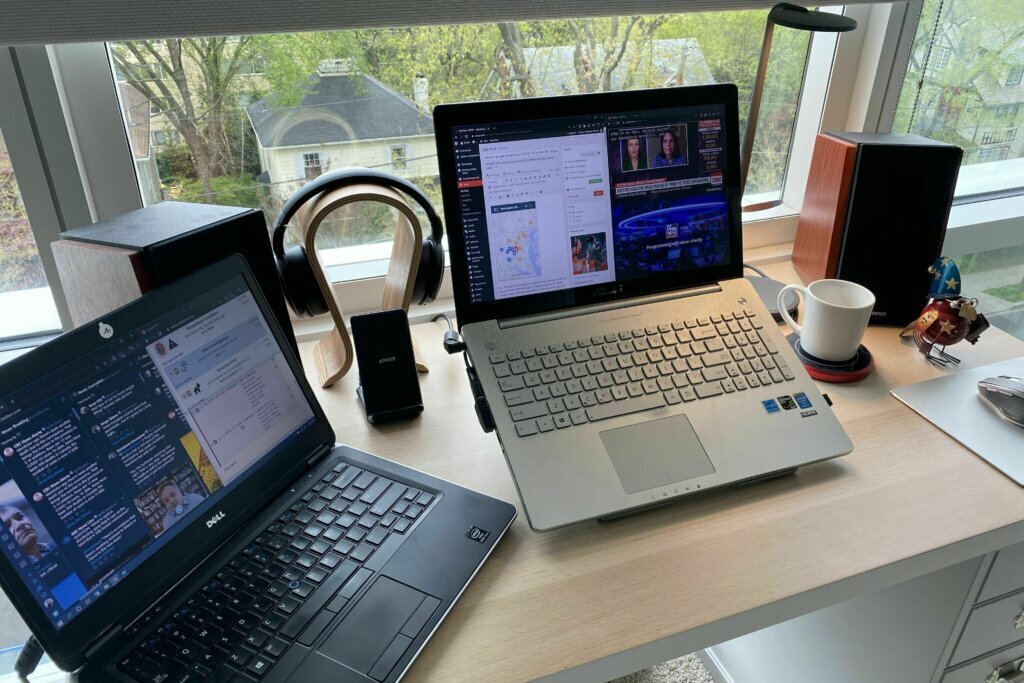
He said he stocked up early.
“We’re doing all right with groceries. I’m an avid China watcher, so I was aware of the situation in Wuhan before most and took the opportunity to stock up on supplies before the run on the supermarkets,” Alvarez said.
“Two months ago, I had a friend in Hong Kong ask me if I could ship her face masks and disinfectants when the virus first started to appear there and the panic buying began. Now, she’s the one sending me masks and supplies. How times have changed.”
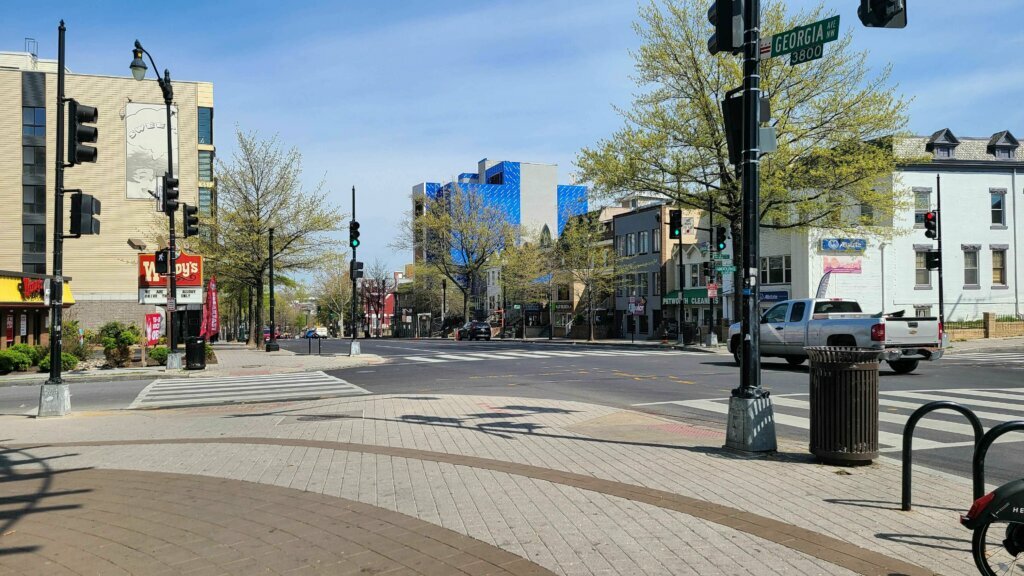

WTOP anchor Debra Feinstein is making it work too. She has been broadcasting from a makeshift studio in her closet. But it’s all still “a little eerie,” she said.
“We are all used to the hustle/bustle/background noise of a working newsroom. It feels a little zombie-apocalyptic, and it is a stark reminder of how serious this is and how seriously we are taking it at WTOP,” Feinstein said.
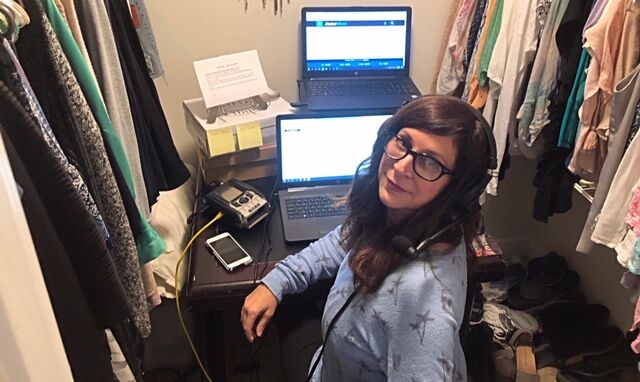
Neal Augenstein has been a staple of D.C. radio for decades. He still gets the news out from home.
Last-minute Passover shopping. No matzoh left. Oy. What to do? Hmm, I AM wearing a mask. (Just a little pre-Pesach humor, Twitter) pic.twitter.com/H0pCC2xbQM
— Neal Augenstein (@AugensteinWTOP) April 7, 2020
(Just to tag onto Neal’s tweet above, my family canceled Easter. That’s unheard of. We streamed Easter instead — literally a sentence I never thought I’d write.)
“For the last couple of decades, it’s been possible to work from home, and for the past ten years I’ve been producing audio in the field on my iPhone. So, the tools were in place,” Augenstein said.
“So now, covering news from home — it’s a challenge. Although news has always been about finding interesting stories and telling them — not physically going to a news conference. Those are now being streamed online, so we can cover them that way. But it’s taking some out-of-the-box thinking to get in touch with people, and have them provide good-quality audio. I don’t think I’d ever heard of Zoom before two weeks ago. Now, the video chat platform is being used by stir-crazy people and reporters trying to get good tape from newsmakers.”
This is Traffic Reporter Dave Dildine’s setup at home.
It’s happening …
And shout-out to our @WTOP management rearranging heaven and earth to keep us safe! pic.twitter.com/AHr0HwVIdc
— Dave Dildine (@DildineWTOP) March 25, 2020
Not everyone is working remotely.
WTOP Director of News and Programming Julia Ziegler still heads into the office, day after day.

“I would say the No. 1 priority is keeping people safe,” Ziegler said.
“I want to make sure, on our team, people come first. So, for me, it’s making sure that no matter whether you’re someone who is working here in this news station or someone who has been working from home that you feel safe where you are.”
Ziegler has gone so far as to clean radio studios herself.
“I’m personally making sure that studios get clean,” she said.
“Every day, I have gloves on, and I’m in the studios, wiping them down to make sure that they are completely disinfected before another anchor walks into that studio.”
WTOP continues to adapt and shift tactics.
“We’ve always been a very mobile newsroom,” Ziegler said.
These are hard times. There’s no question about that. People are losing their jobs. People are struggling to make ends meet. To pay the bills.
But if it’s any comfort, any at all, we’re going to keep bringing you the news.
Also, I don’t mean to alarm anyone, but I just noticed I’m out of cheese.
-Will Vitka, in isolation since March 11, signing off for now.








